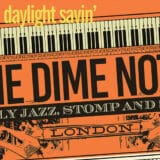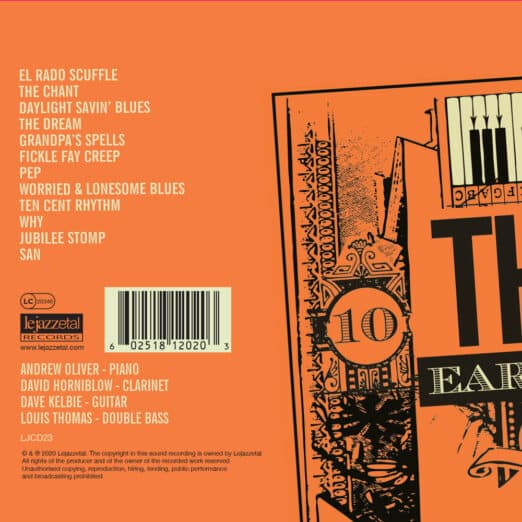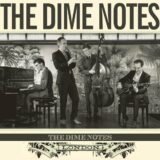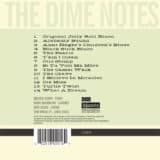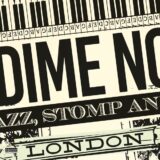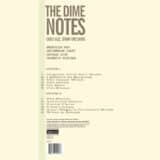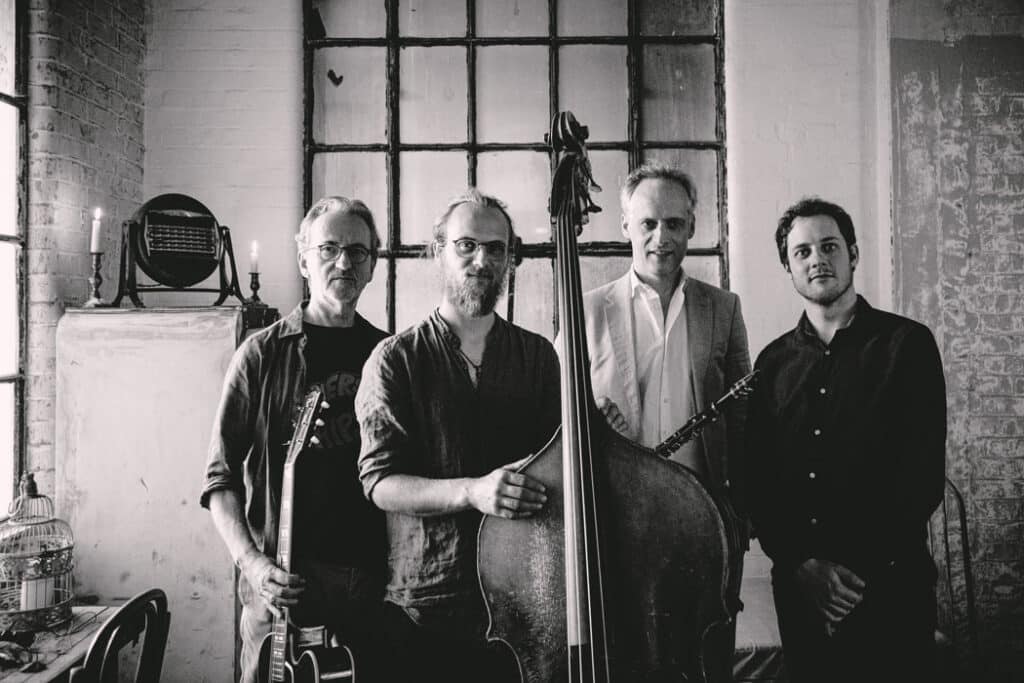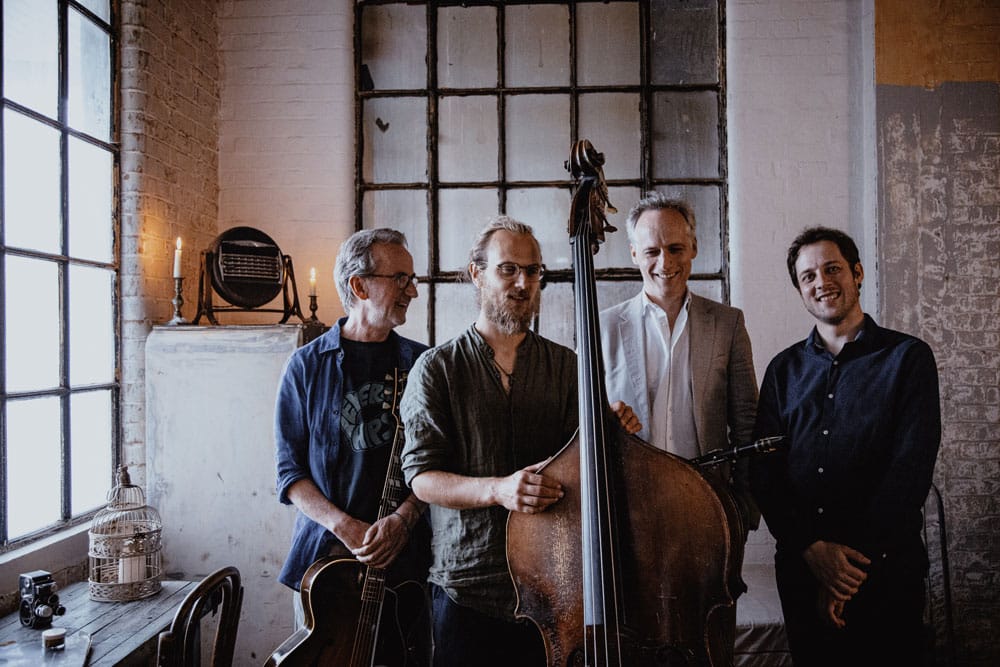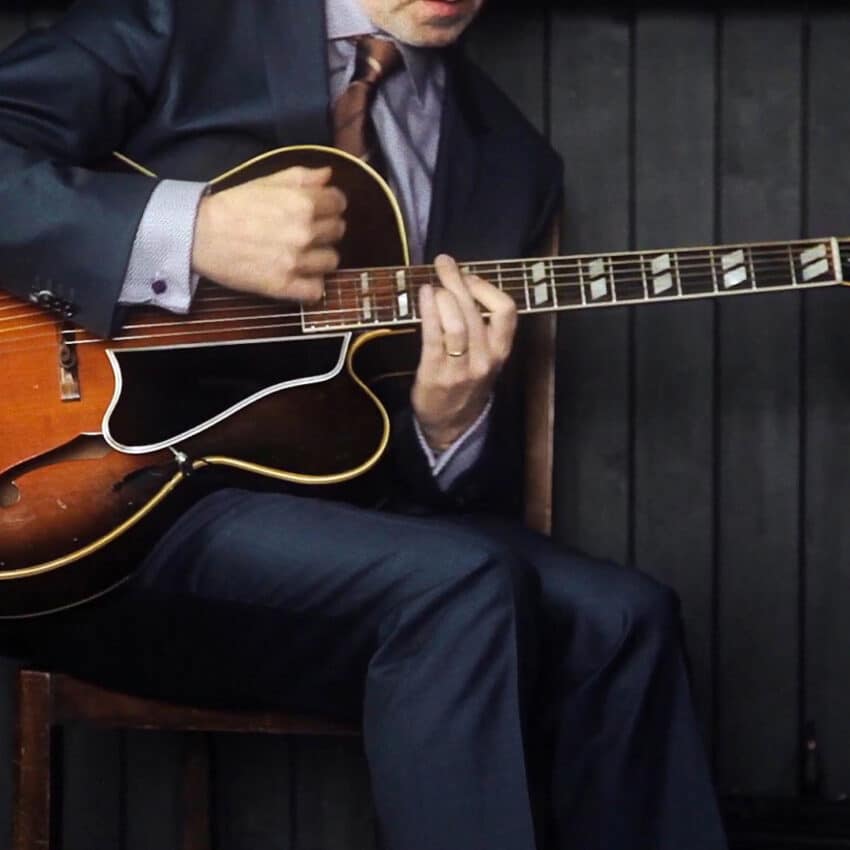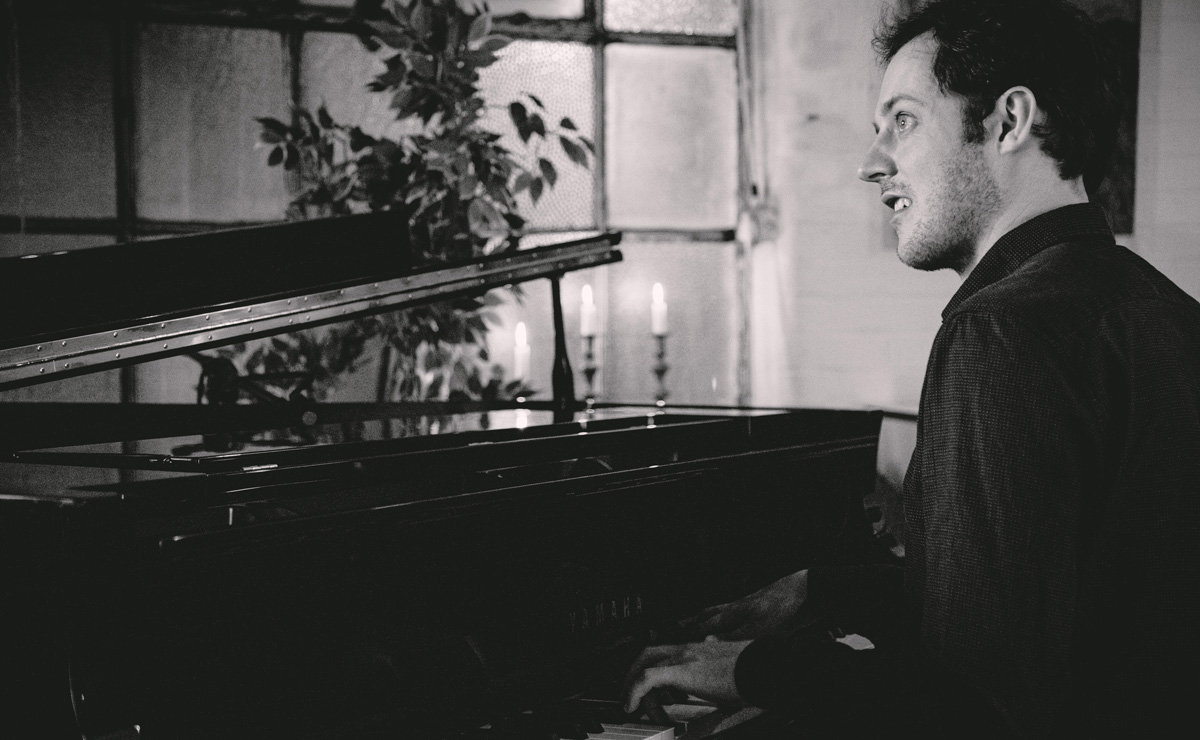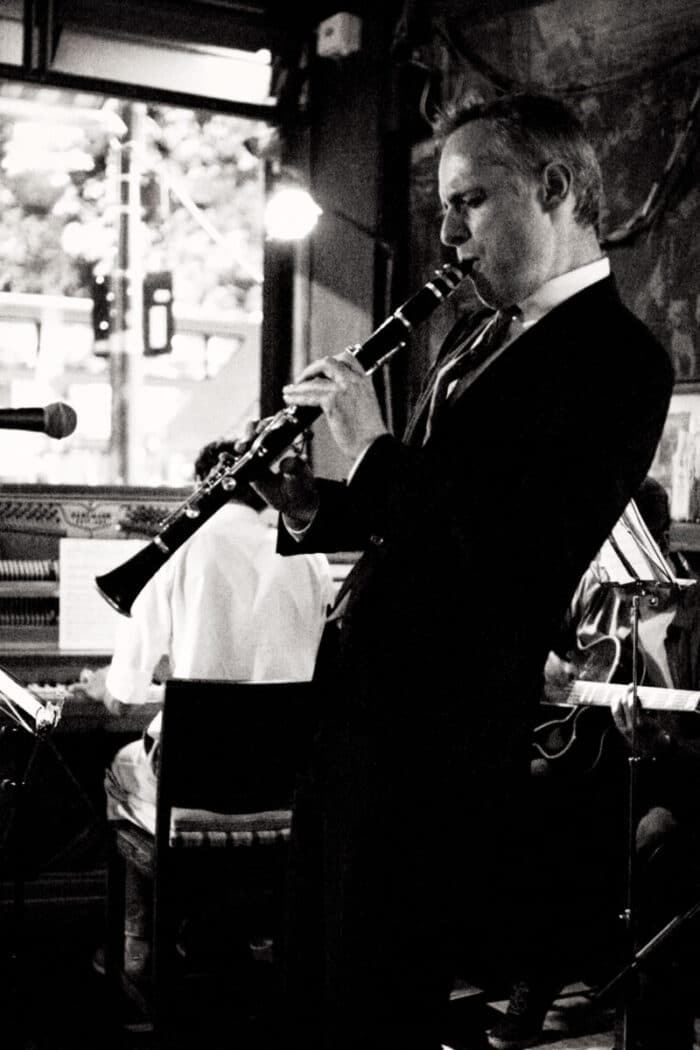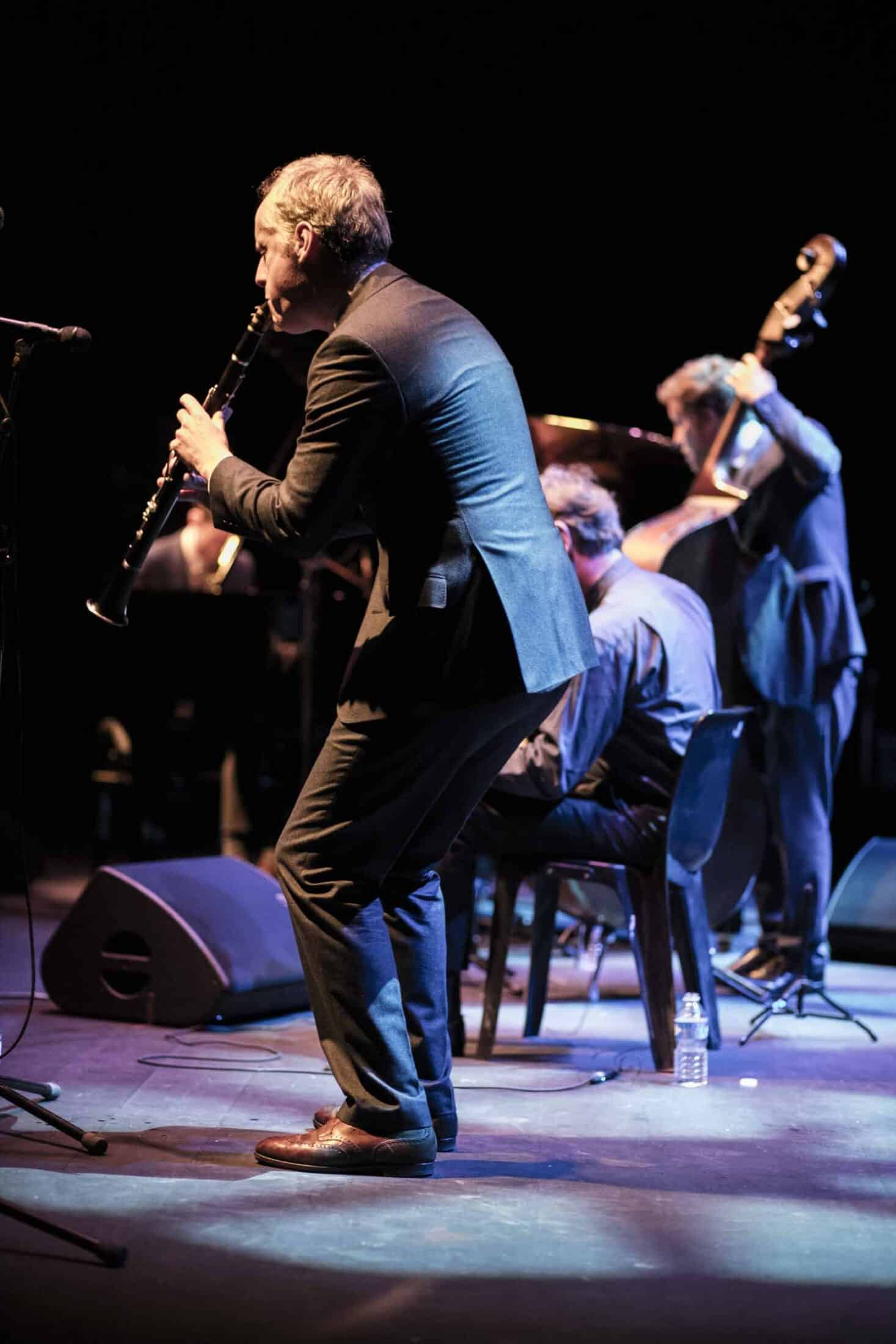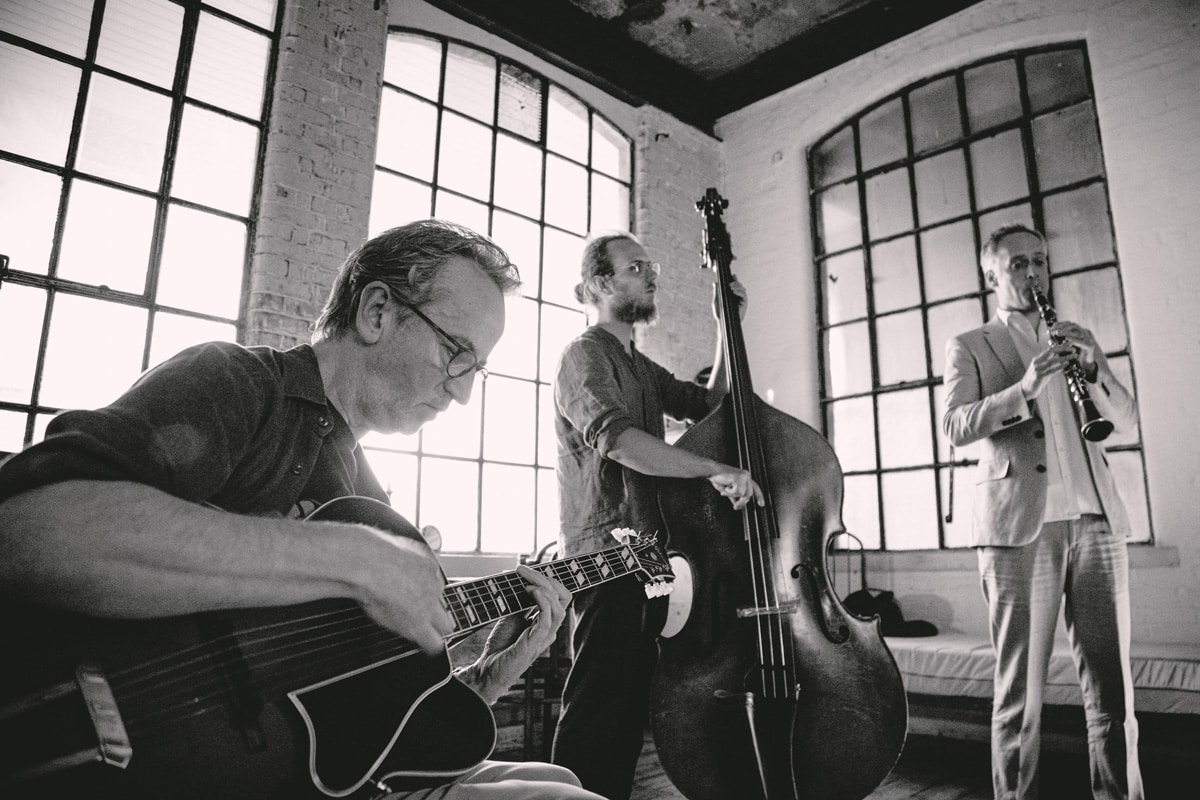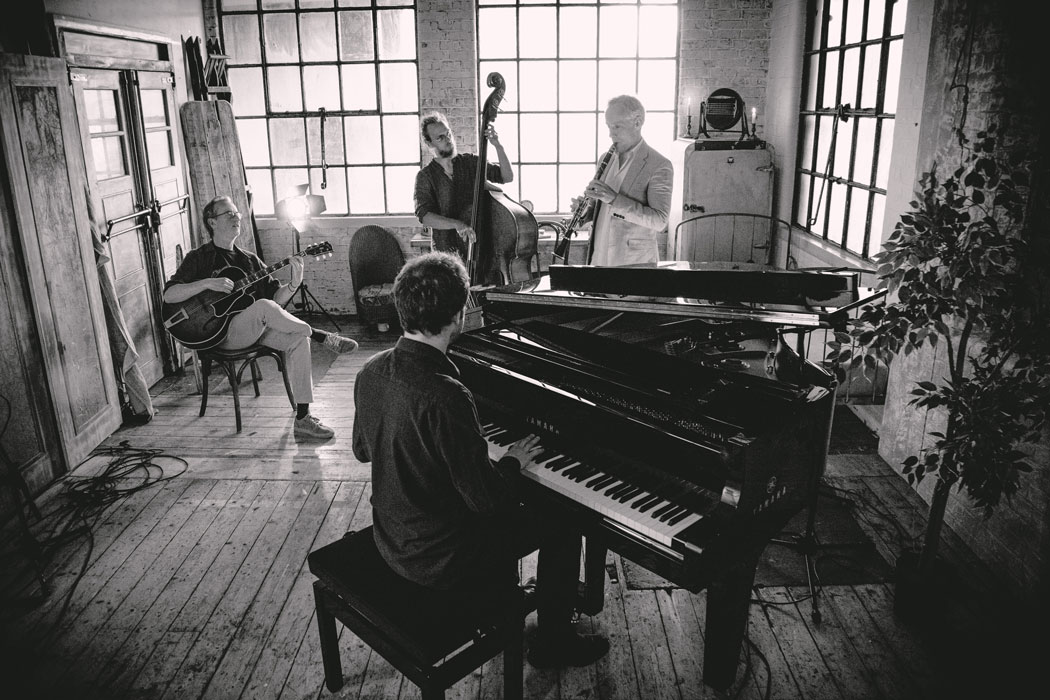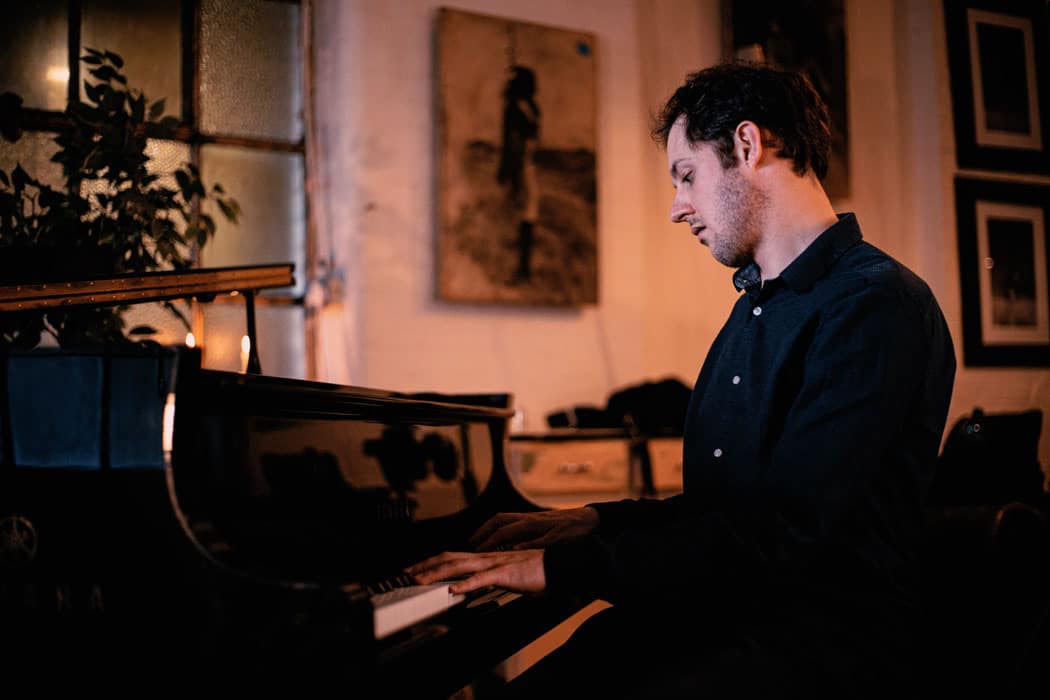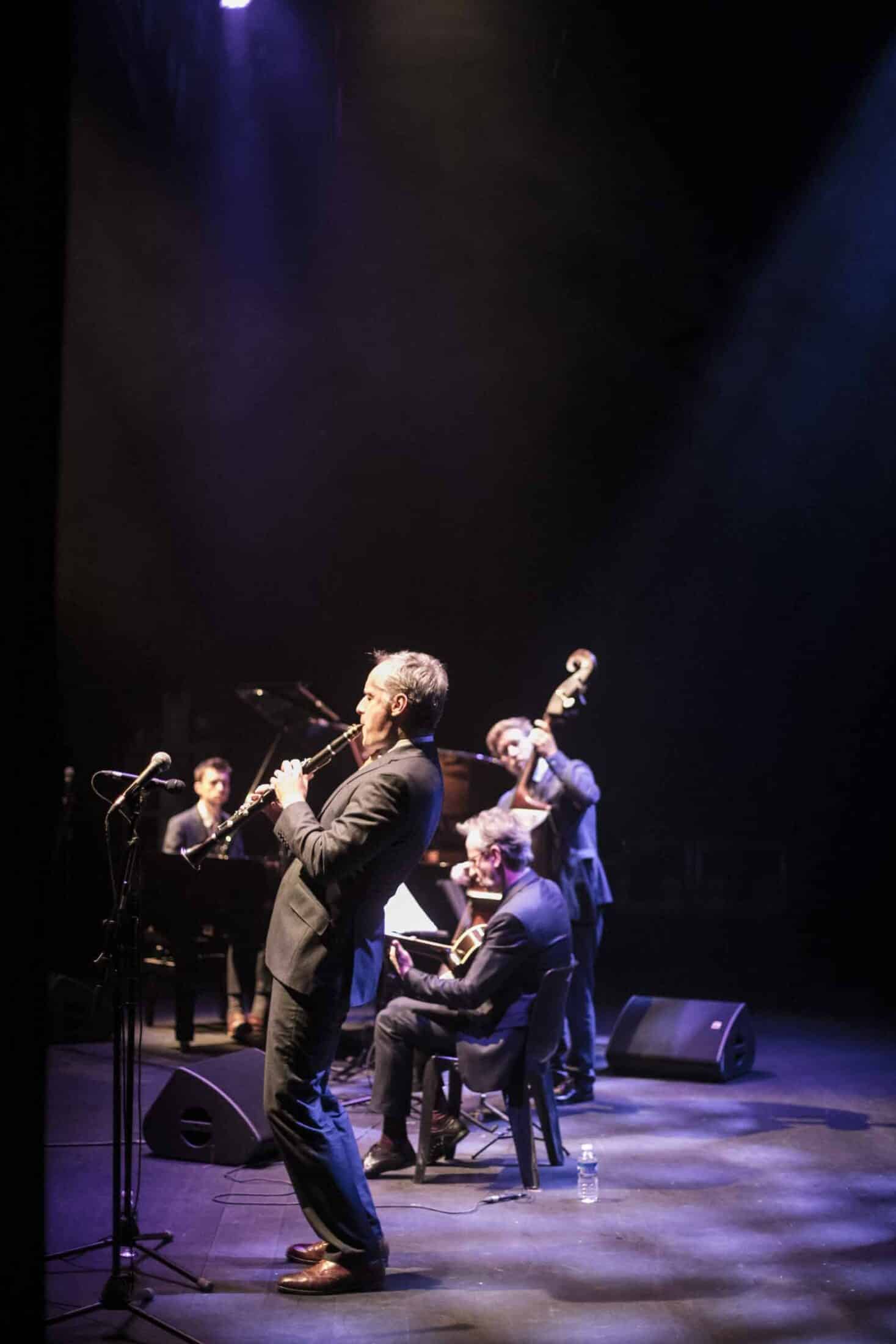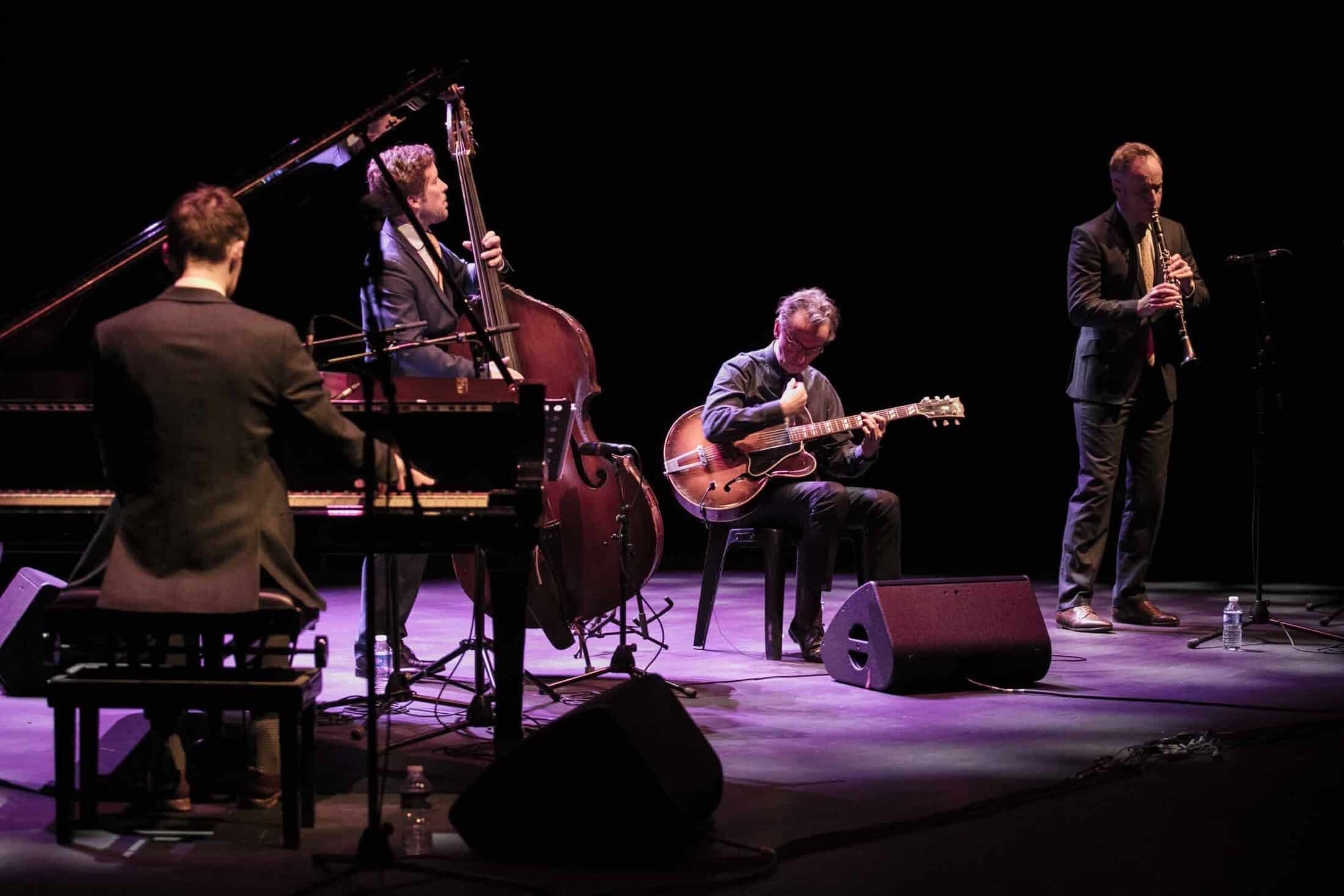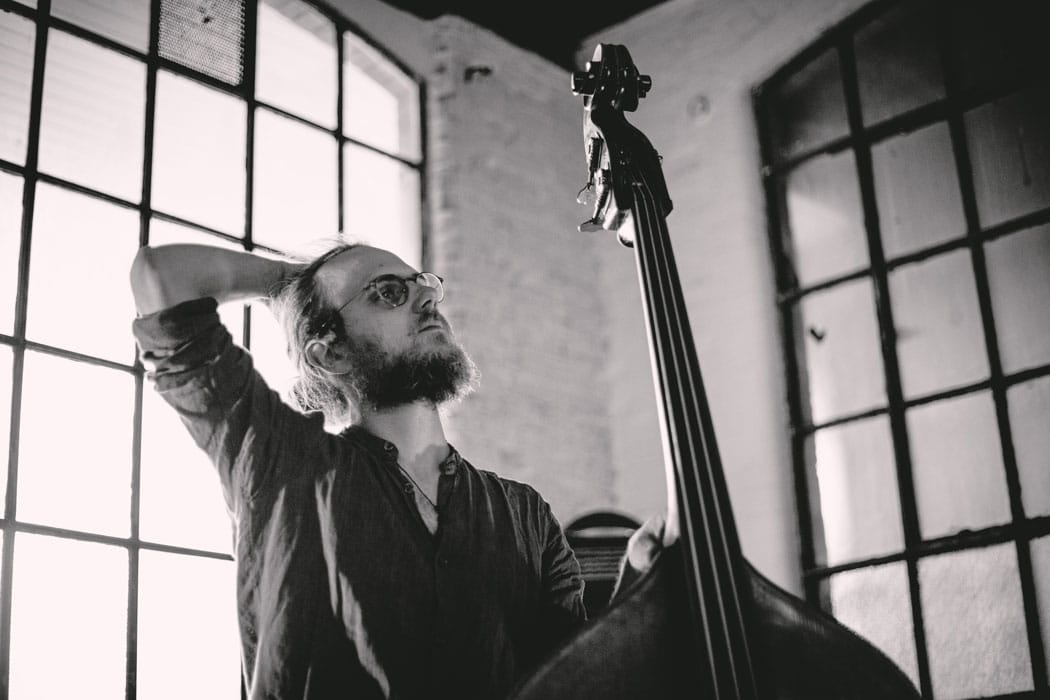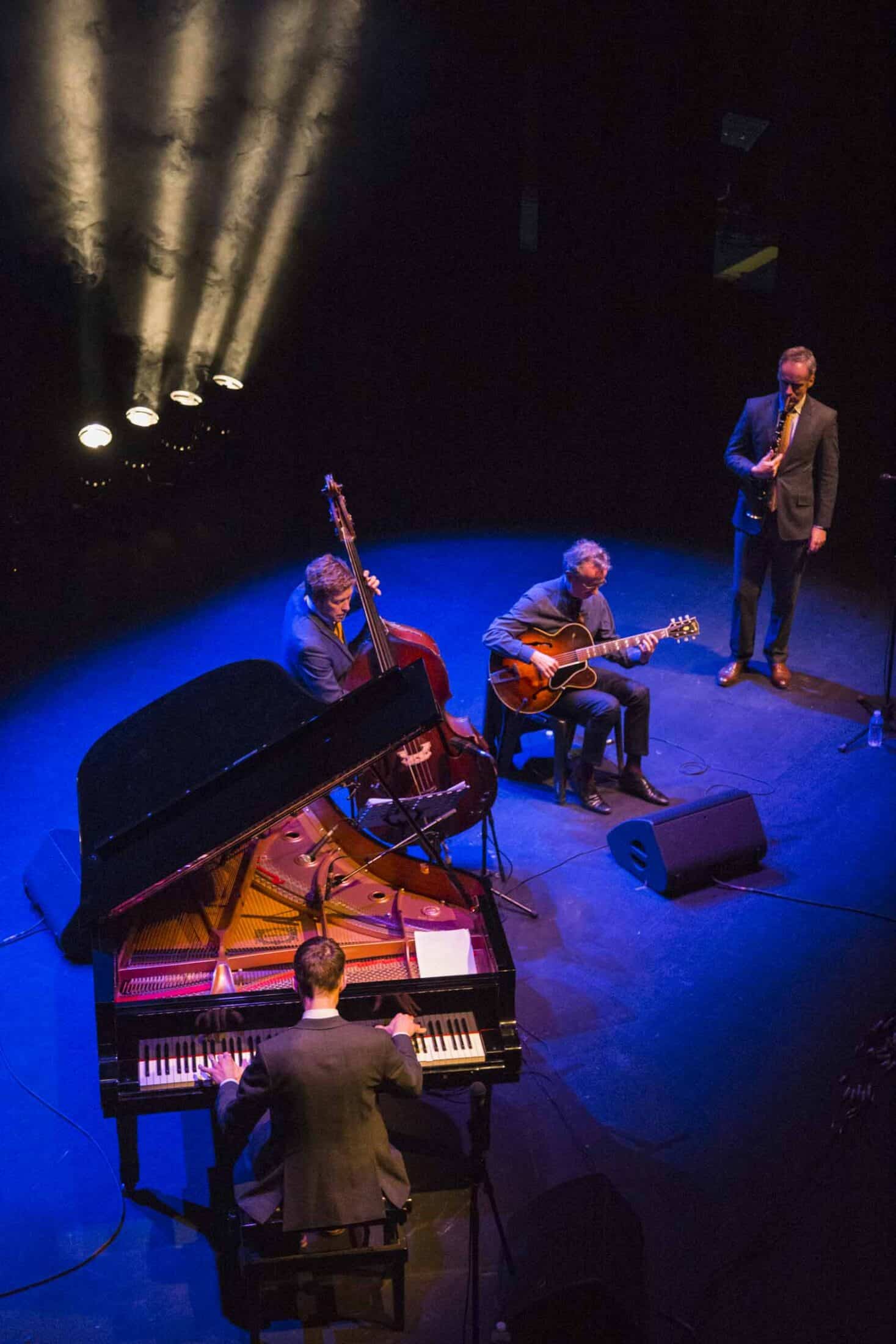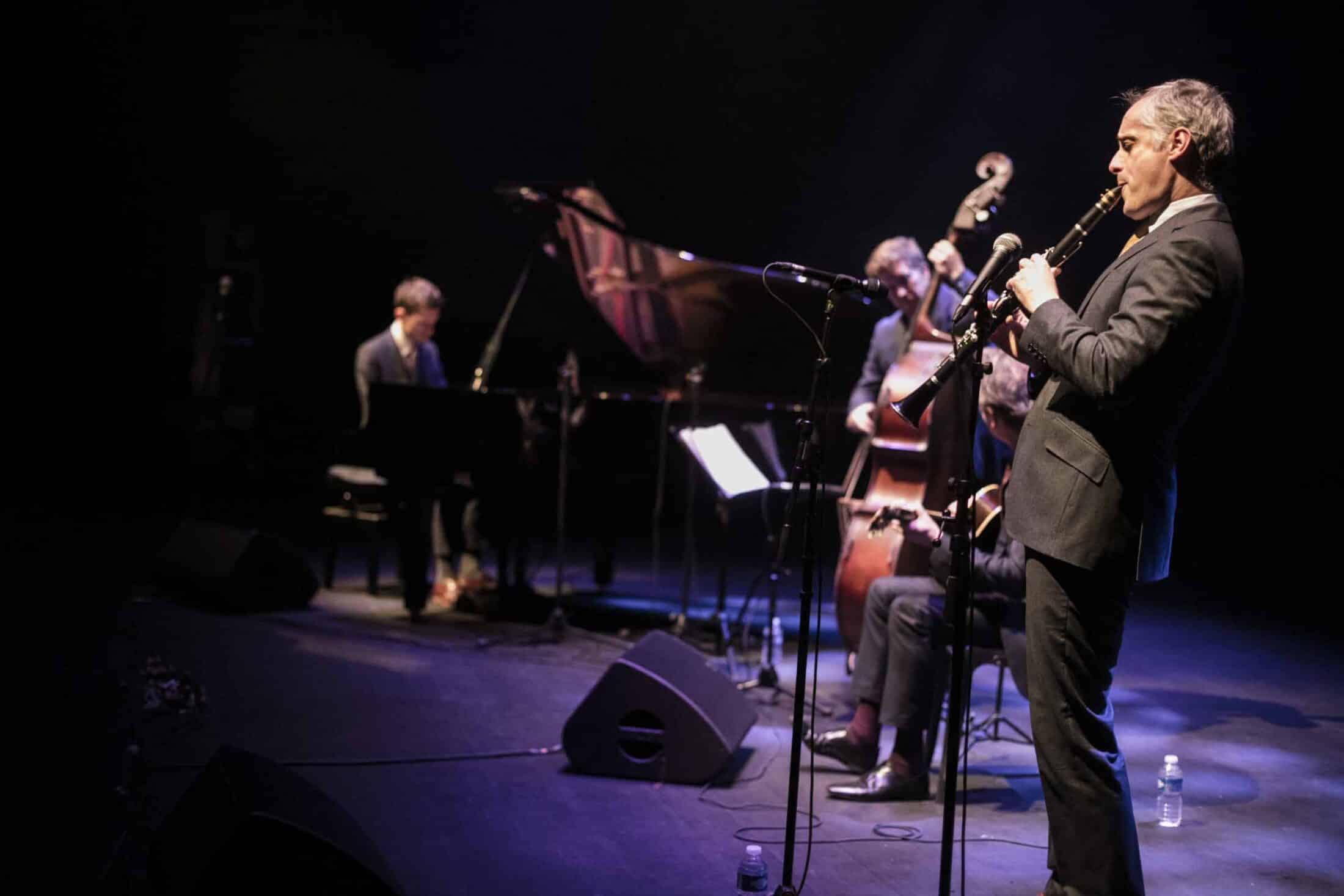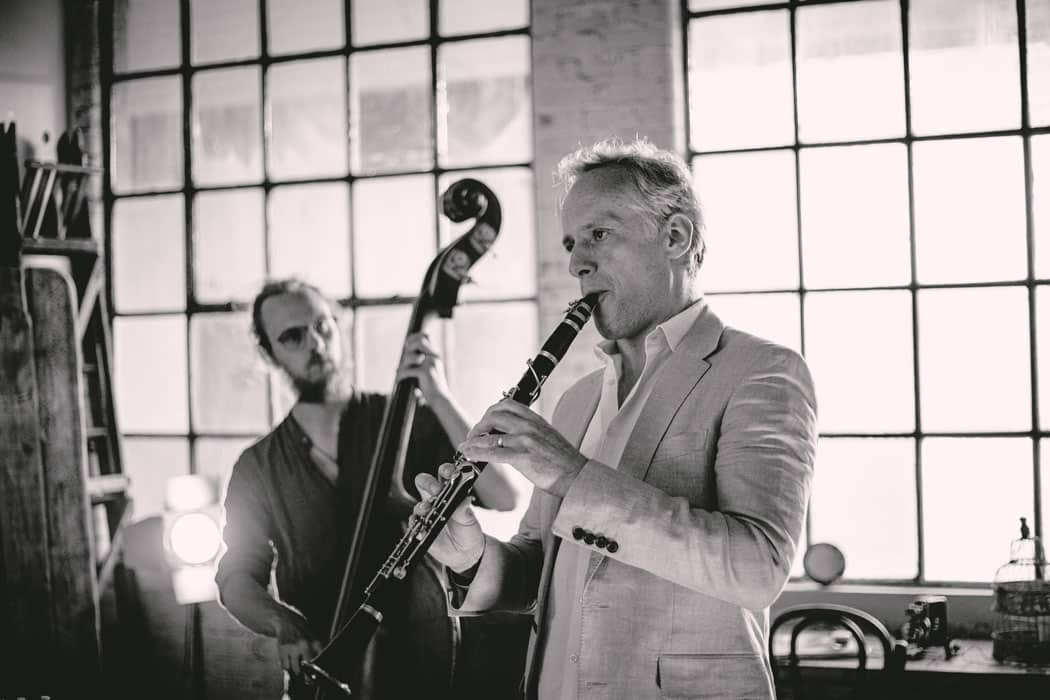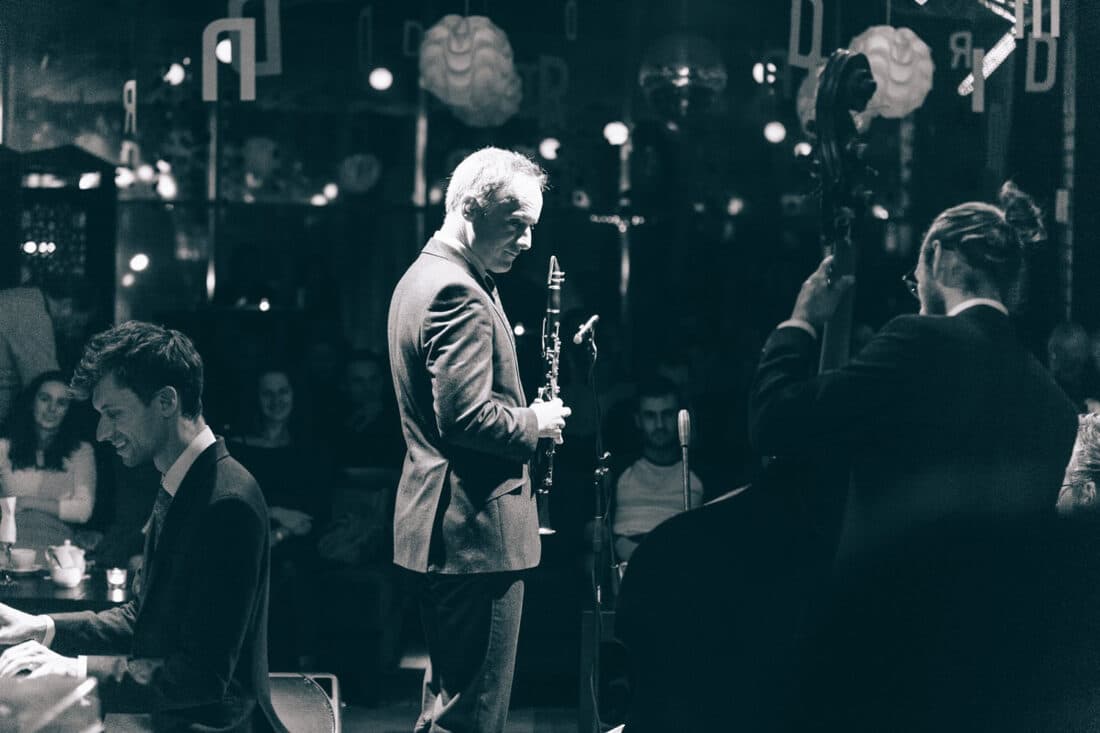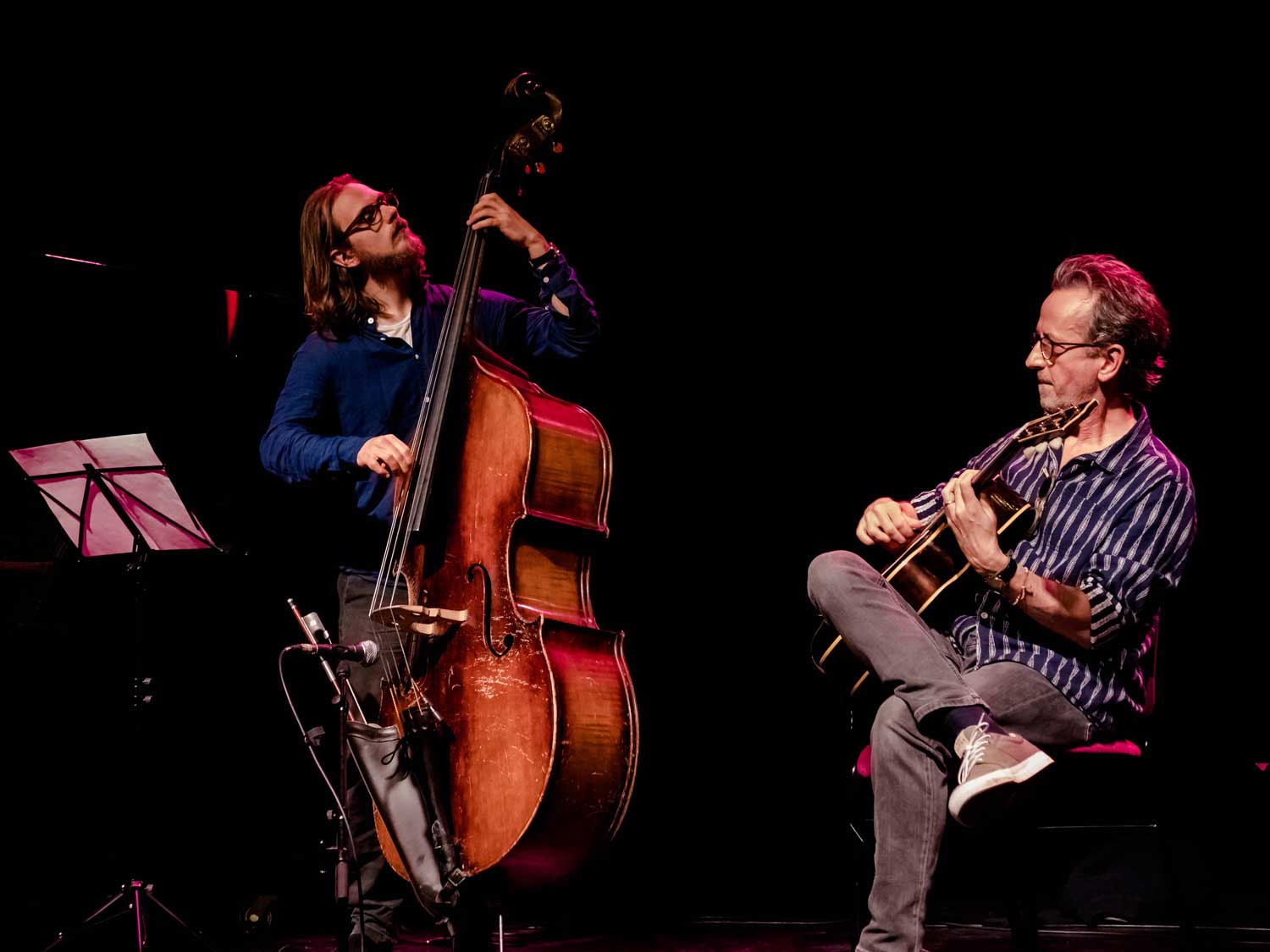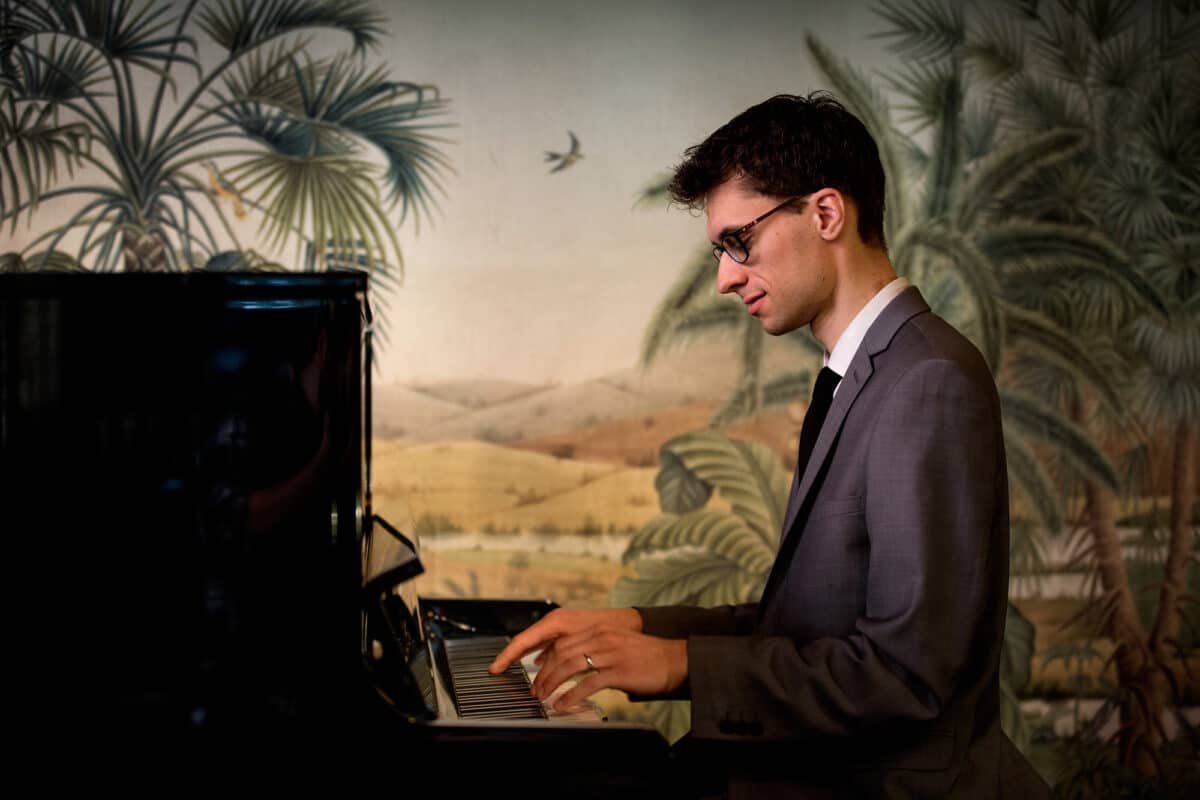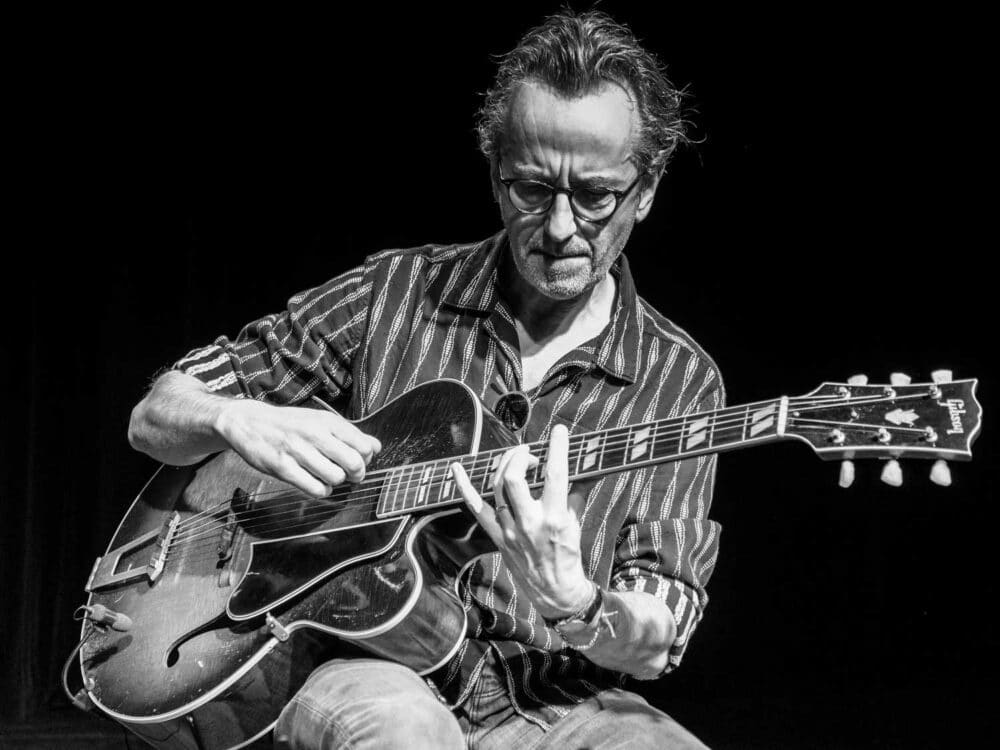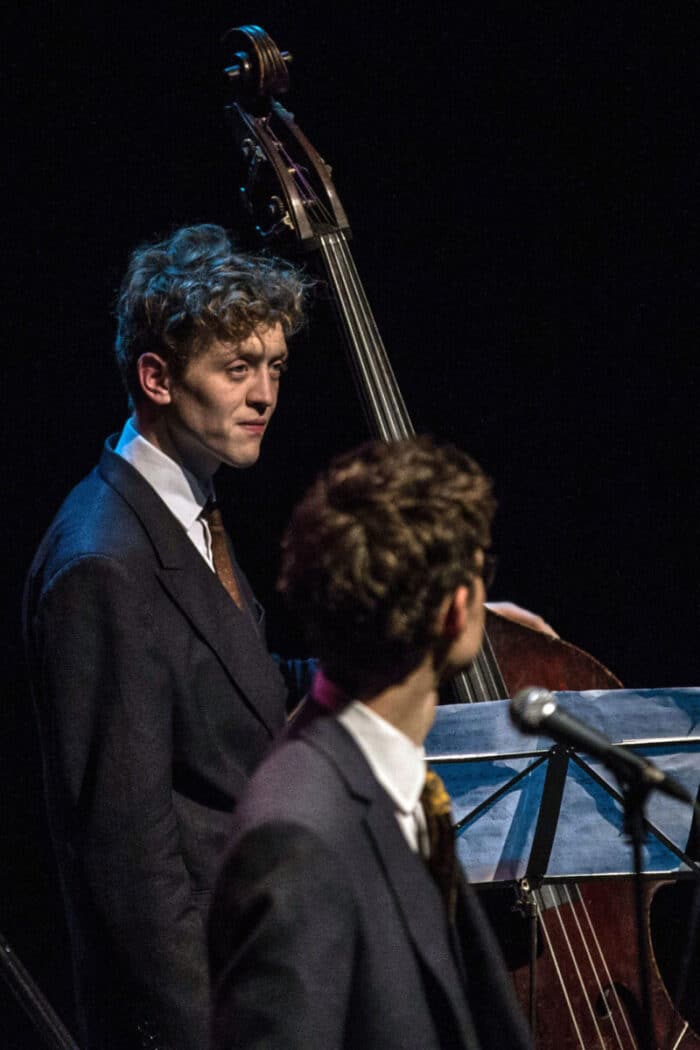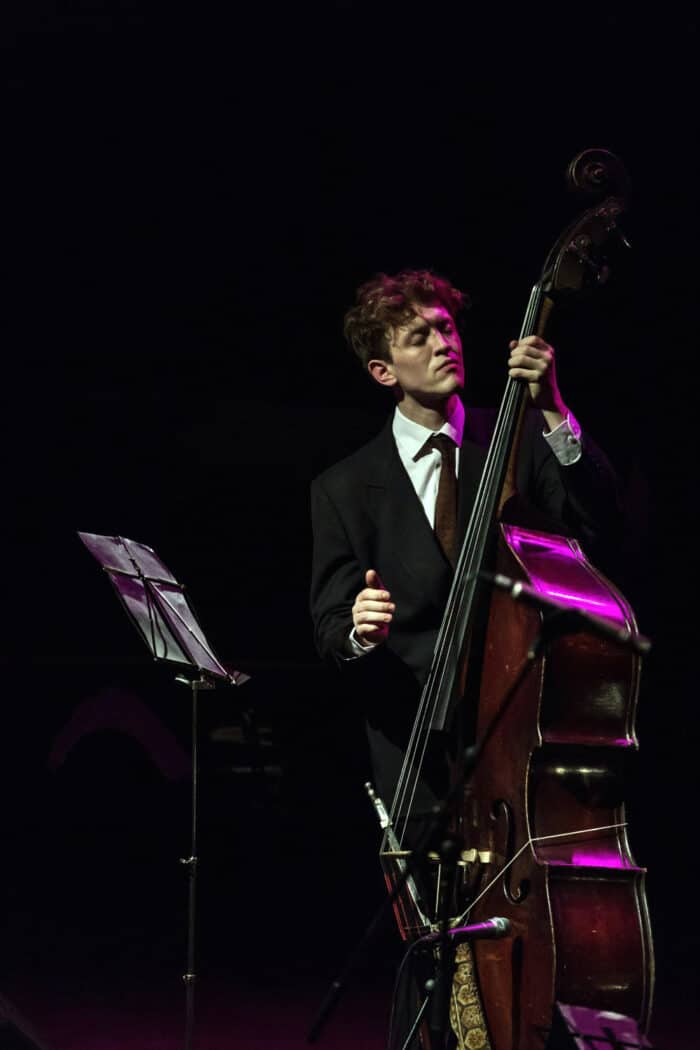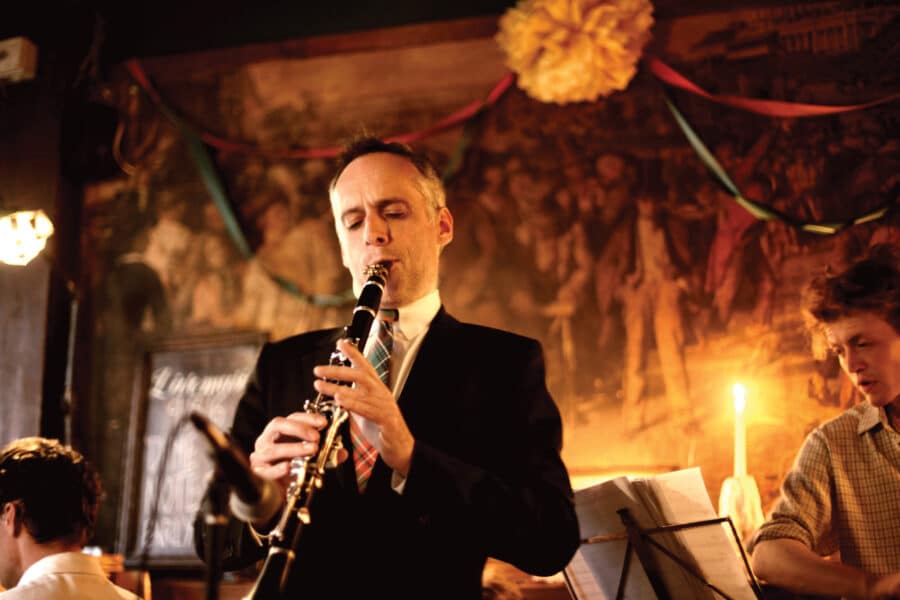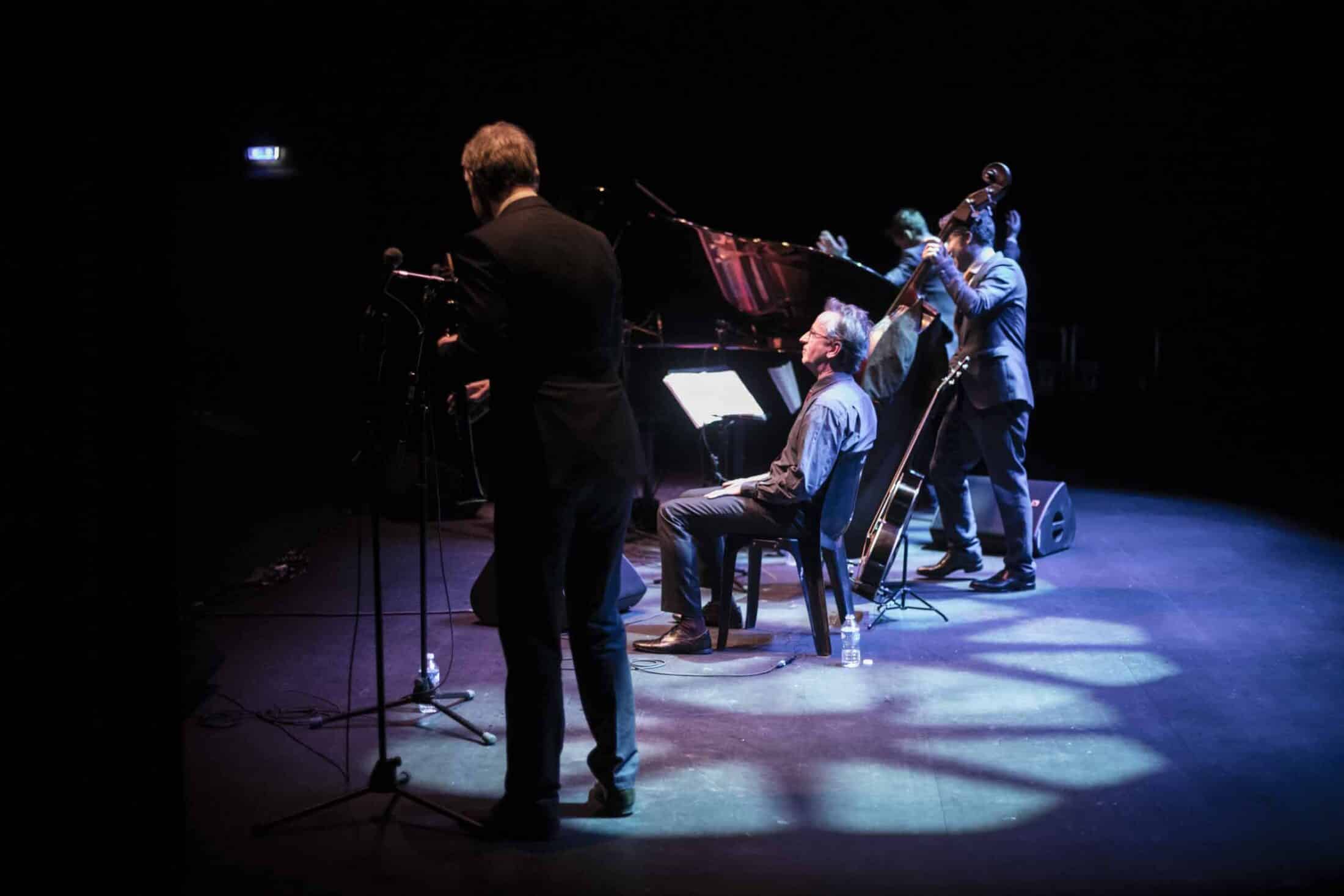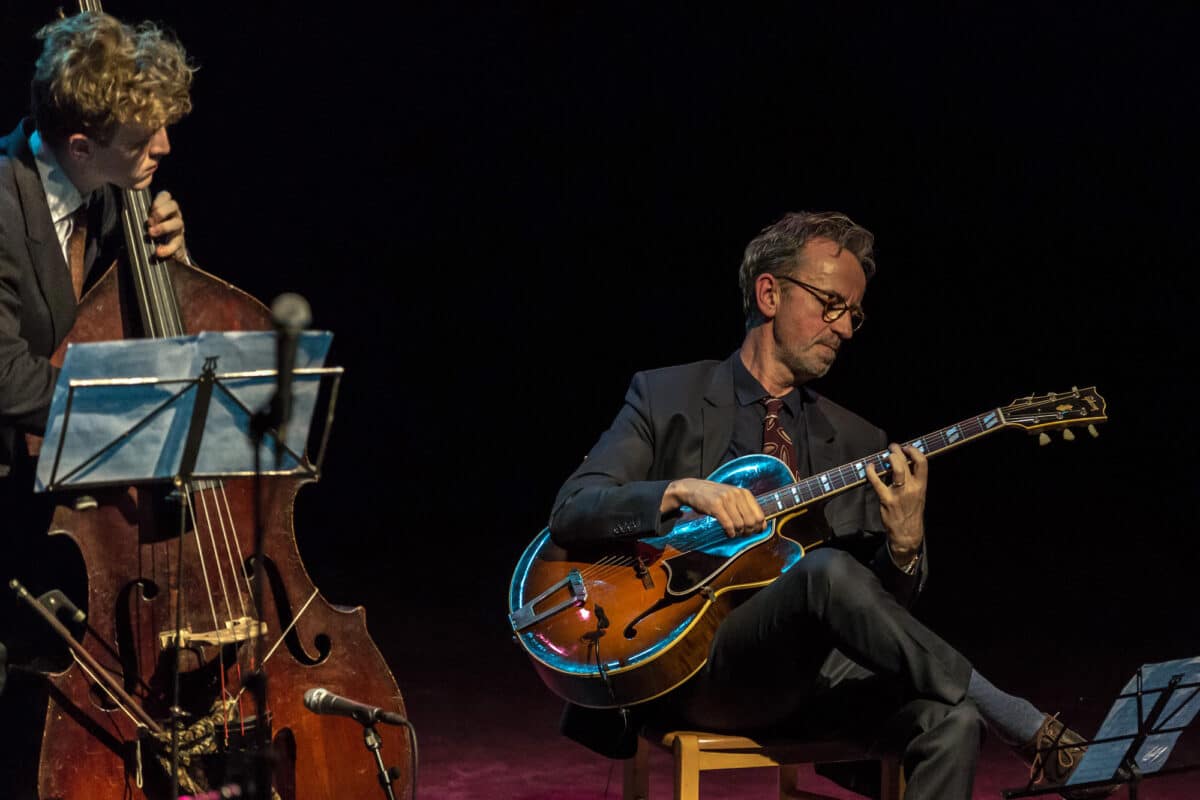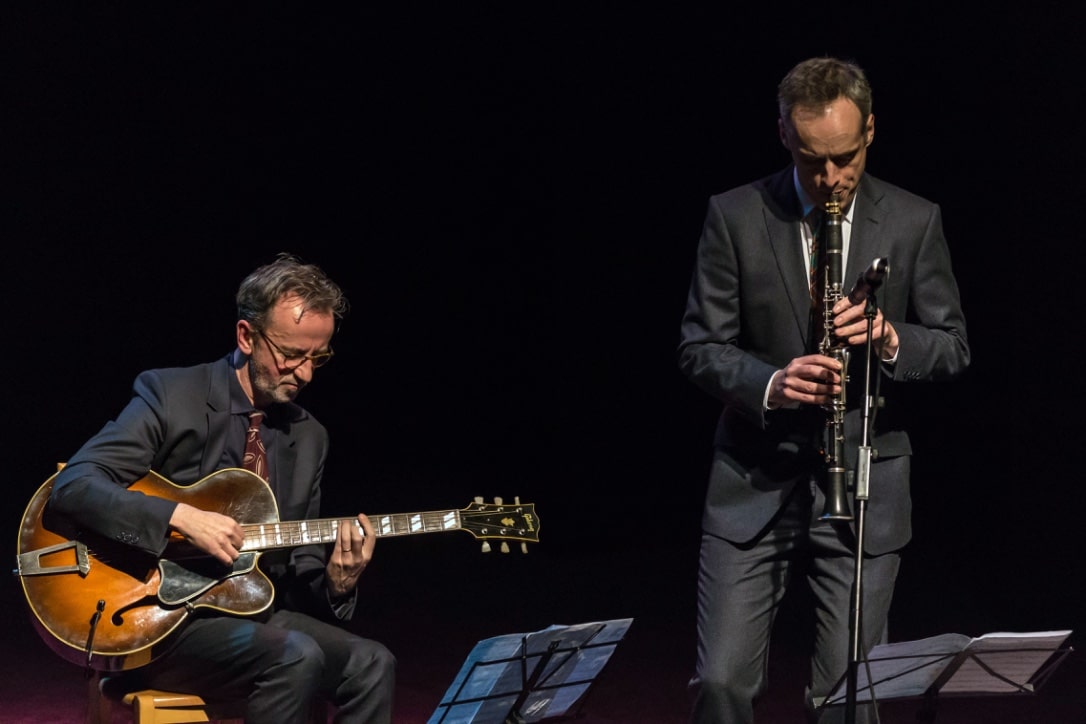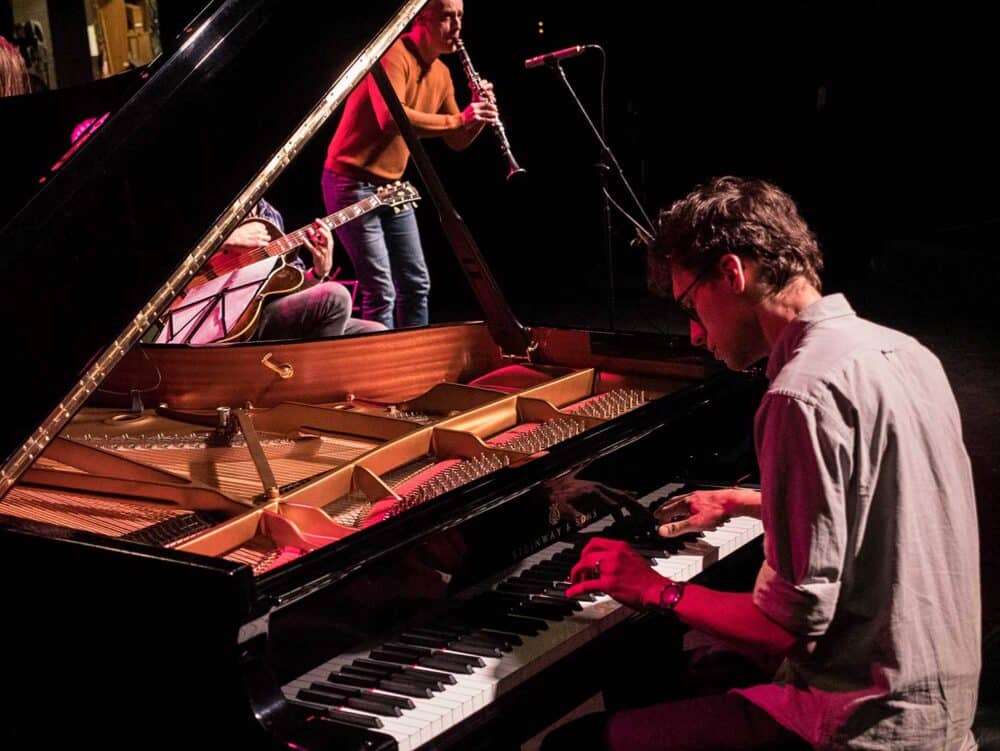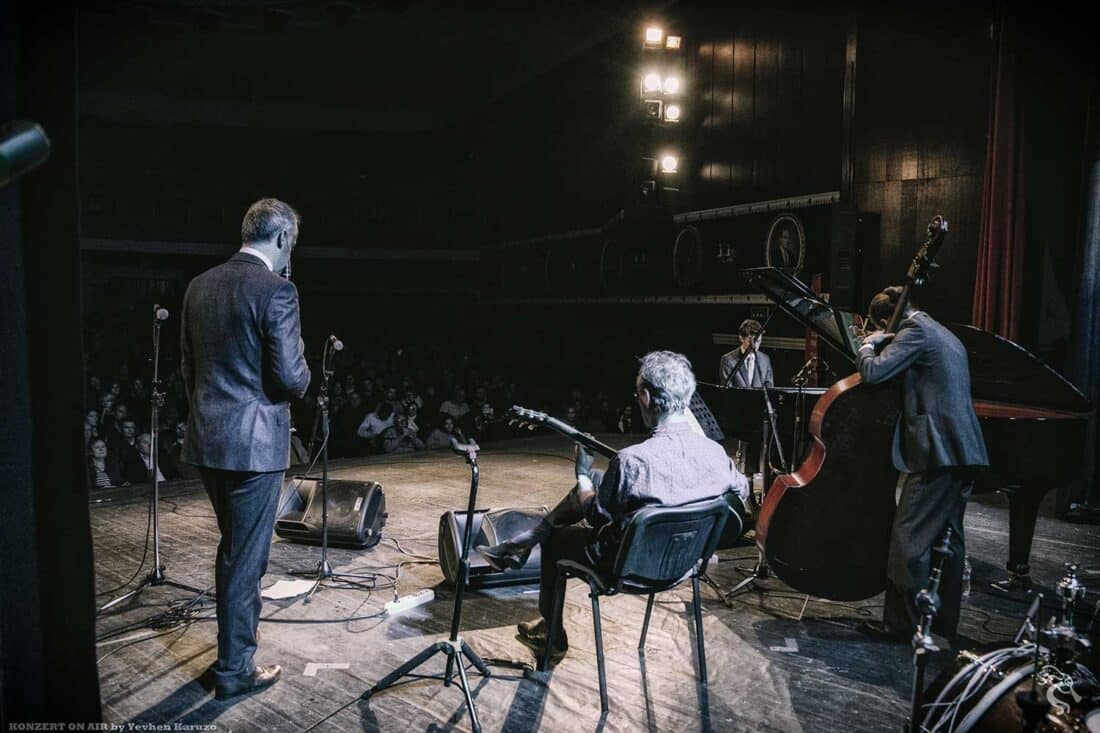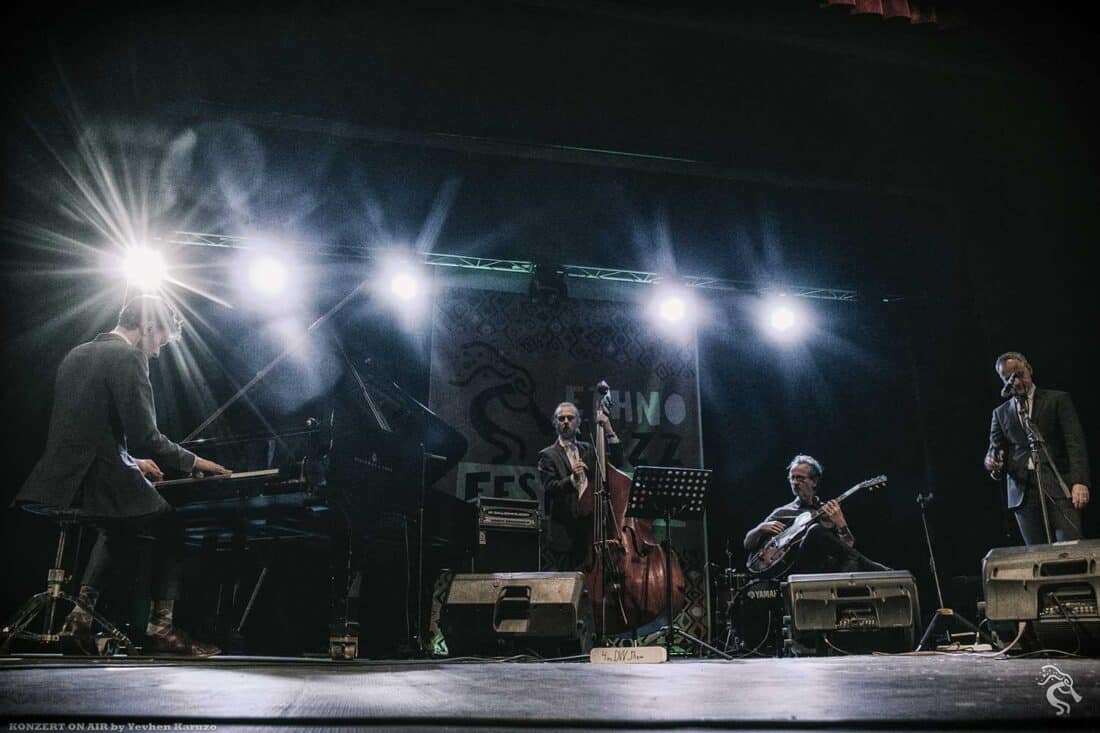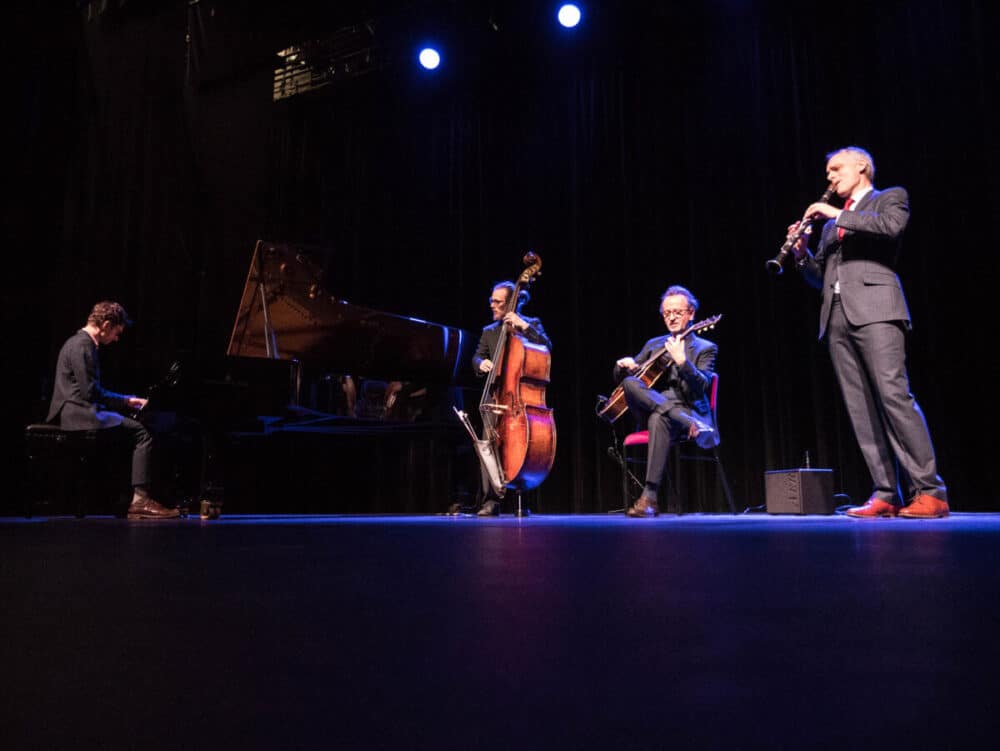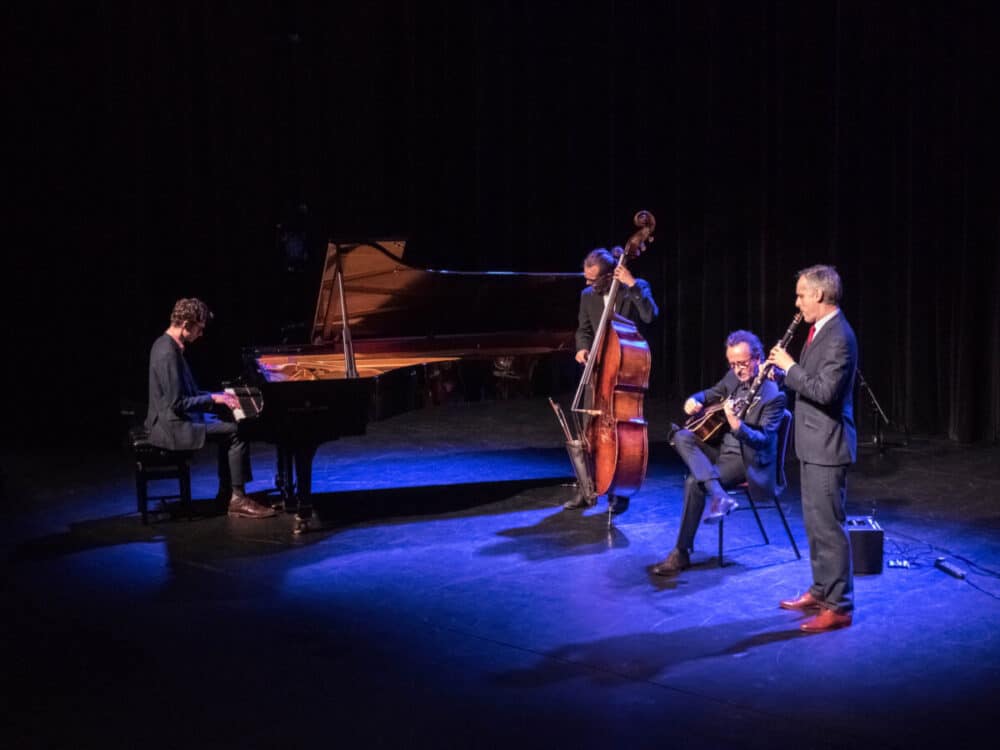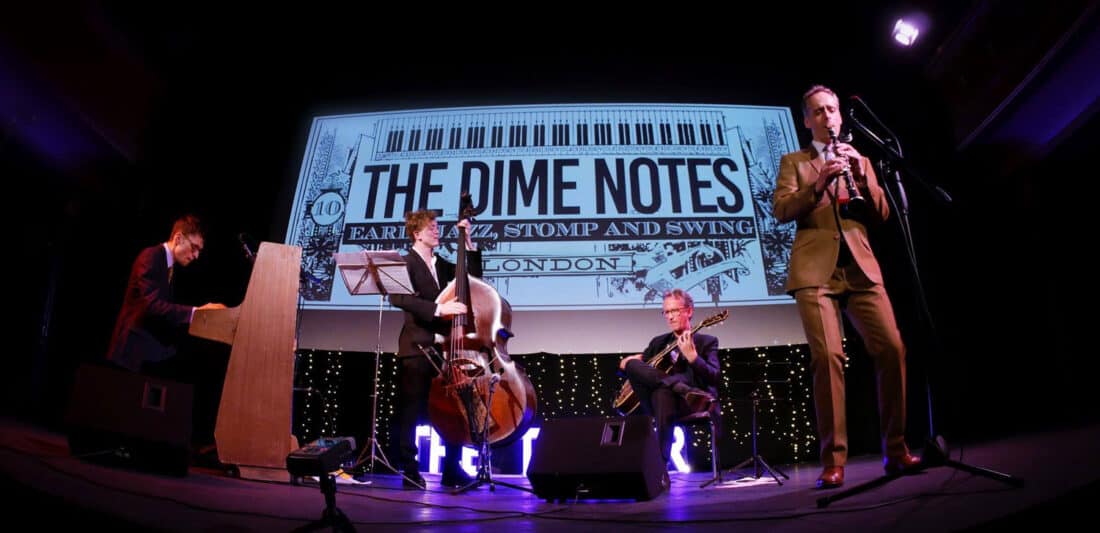The Dime Notes
- Blues drenched clarinet-driven 1920’s New Orleans jazz with London’s hard-swinging vintage jazz band.
- YOUTUBE PLAYLIST
- DIME NOTES TRACKLISTS & RECORDINGS
- DIME NOTES ALBUMS
- PRESS QUOTES
- CALENDAR
- PHOTOS
- FULL REVIEWS
Blues drenched clarinet-driven 1920’s New Orleans jazz with London’s hard-swinging vintage jazz band.
The Dime Notes have a reputation for an unorthodox approach to the blues-drenched sounds of clarinet-driven 1920’s New Orleans jazz. They’ve toured extensively their repertoire of stomps, blueses, and forgotten gems of the era from musicians such as Jelly Roll Morton, Johnny Dodds, and Red Nichols.
Fronted by UK clarinetist David Horniblow, much admired on the European jazz stage for his foot stomping approach to hot swinging jazz and who’s travelled the globe with just about every respected band, and UK pianist/composer/arranger Sam Watts, known for his focused creativity in many styles of music and regular with Jean Toussaint and Jason Marsalis.
The band is anchored by the unstoppable pulse of London’s knockout rhythm section. Guitarist Dave Kelbie is accompanist to many world class musicians such as Evan Christopher in Django a la Creole, John Etheridge’s Sweet Chorus, Don Vappie and Jazz Creole, Fapy Lafertin and Tcha Limberger. Bassist Louis Thomas, with an arsenal of dextrous techniques, well known across the international scene for his swing, huge sound and stylistic versatility.
The Dime Notes present a fresh take on a timeless style, emphasising the propulsive grooves and sultry melodies which made early jazz revolutionary, controversial, and wildly popular.
Pre-COVID season included concerts in Ukraine, Moldova, Germany, France, two tours of Canada, one of Scotland, N Ireland and Switzerland/Austria, and the new album released mid-2020.
DAVID HORNIBLOW – Clarinet
SAM WATTS – Piano
DAVE KELBIE – Guitar
LOUIS THOMAS – Double Bass
YOUTUBE PLAYLIST
DIME NOTES TRACKLISTS & RECORDINGS
DIME NOTES ALBUMS
PRESS QUOTES
THE SUNDAY TIMES UK
THE JAZZ RAG UK
VINTAGE JAZZ MART UK
SYNCOPATED TIMES US
LA JAZZ SCENE US
THE SUNDAY TIMES UK
JAZZ JOURNAL UK
ACKER BILK
KMHD JAZZ RADIO USA
ALL ABOUT JAZZ USA
EVAN CHRISTOPHER
JAZZ JOURNAL
CLASSICA FRANCE
CALENDAR
PHOTOS
FULL REVIEWS
CONCERT REVIEW. SCHAFFHAUSEN NACHRICHTEN 24.04.2023
The Dime Notes” delighted the audience at the Schaffhausen jazz club
Old jazz is often dismissed as saying that in this style old pieces are repeated over and over again in the traditional way. The four musicians of the band “The Dime Notes” showed on Saturday in the Alte Schützenhaus at the Jazztreff Schaffhausen that there is another way. David Horniblow (clarinet), Sam Watts (piano), Dave Kelbie (guitar) and Louis Thomas (bass) played old pieces – especially by Jelly Roll Morton – but with clear differences to the originals.
First of all, from the cast, but also from the way of playing. Although we know that Jelly Roll Morton attached great importance to well-rehearsed arrangements based on notes he had written, «The Dime Notes» went one step further and played whole pieces based on complete scores for all four instruments, but also duets of different instruments – such as again and again for bass and piano – or even for solos. Even the guitarist had notes on the floor in front of him, which he often sorted with his shoe.
With these arrangements, a very individual sound was created in the highest perfection, since all four musicians mastered their instruments perfectly. But somehow, for once, the New Orleans style often sounded different than what is known from many jazz bands: much less rough and improvised, almost civilized, so to speak, and played in concert. Each of the four set their own accents. Watts probably came closest in style to Morton, who was also a pianist. But he could also do something completely different: in Morton’s «Panama», for example, he intoned the intro almost in the flattering style of a bar pianist. Thomas had a particularly impressive task on the bass: Never before has one heard such long and intense bass solos in the Schützenhaus, in which Thomas was allowed to interpret whole pieces and was applauded by the audience on the open scene. Kelbie on guitar had a style all his own. Surprising and with an unfamiliar tone, for example, his riffs, in which he swept diagonally from bottom to top over the strings. And Horniblow also left the beaten path again and again. He only very rarely used those soft, almost cheesy tones that are often played in old jazz. In addition, he never rolled out the main themes of the pieces – for example in the well-known catchy tune “Lazy River”, in which he only touched the theme lightly and then immediately switched to variations that were sometimes played almost hard.
The short bars typical of the style appeared again and again, in which themes are played back and forth like in a ping-pong, for example between bass or guitar and the piano. This is how a familiar and yet very unique style emerged. Judging by the long and frequent applause, the audience in the practically sold-out hall really liked the whole thing.
KARL HOTZ
CONCERT REVIEW. DONAU KURIER 23.04.2023
Reise in die Roaring Twenties. Von Neuburg nach New Orleans
Journey into the Roaring Twenties
From Neuburg to New Orleans
The Dime Notes inspire in Birdland
The Dime Notes present swing and oldtime jazz.
The four gentlemen who stand on the stage of the Neuburger Birdland under the name The Dime Notes and take their audience on a guided group tour have a clearly defined goal. New Orleans and the Roaring Twenties including a visit to Jelly Roll Morton as a special attraction.
Boogie Woogie, Ragtime, Blues, Swing and Charleston are on the tour program led by clarinetist David Horniblow, pianist Sam Watts, double bassist Louis Thomas and guitarist Dave Kelbie, music that once, in the days of shellac, provided entertainment for offered a wide audience to dance and celebrate with. Today, completely unimpressed by all the innovations and stylistic changes within jazz that have taken place in the meantime, it tends to eke out a niche existence, especially in its unadulterated form. And yet it still attracts the public and can inspire people. The two loudly demanded encores at the end of the concert are no coincidence.
Not everything, but a lot is true to the original. You can get by without electricity, the guitarist is part of the rhythm section, as was customary at the time, does not play any solos and sets the direction with stoic calm, the pianist masters various professions such as boogie, stride and barrel house and the clarinet is the focus. In the pre-war years it was very present in jazz, before it was gradually supplanted by other wind instruments. Louis Thomas and his double bass occupy a special position in The Dime Notes, because in his hands his instrument shows itself to be emancipated as a soloist and has freed itself from the role of pure accompanist, which it still had before Oscar Pettiford.
Of course, there is a reason for the extensive study of the compositions of the pioneering pianist Jelly Roll Morton (1890-1941), namely in Horniblow’s recently released album “The Complete Morton Project”. If there is a specialist who can translate it from the language of the piano to that of the clarinet, then it is probably Horniblow, whose technical brilliance is already known from Chris Barber’s band. In Sam Watts he has a congenial partner, with whom not only Morton’s pieces but also those of contemporaries like Red Nichols, James P. Johnson or Jimmy Noone shine in their old splendor. The fact that in the meantime almost or actually forgotten pearls such as Leadbelly’s “Alabama Bound”, Fats Waller’s “Serenade For A Wealthy Widow” or Morton’s “Freakish” were unearthed during the conception of the set list gives the matter additional appeal.
Of course, The Dime Notes aren’t reinventing the wheel of jazz, instead they rummage through rarely opened boxes with skill and pleasure, uncovering treasures you’ve heard of existed but haven’t really explored in depth. So long live nostalgia again? – Without a doubt. But also the pleasant look back into a musical world before our time.
KARL LEITNER
ALBUM REVIEW. JAZZ JOURNAL UK 13.12.2020
Daylight Savin’ by The Dime Notes
Since their first and well-received album in 2016, the UK-based Dime Notes have been busy globetrotting as expert exponents of classic New Orleans style hot jazz. This second release is on similar lines to the first, with particular attention paid to the legacy of Jelly Roll Morton (American pianist Andrew Oliver and UK clarinettist David Horniblow had made a special study of Morton’s music in 2018 for their Morton Project album).
The Chant, though written by Mel Stitzel, is primarily associated with Morton’s recorded version, and the lively quartet performance here follows the basic shape of the striking arrangement on the Red Hot Peppers recording – as does Grandpa’s Spells, with guitarist Dave Kelbie featured, expanding on Johnny St. Cyr’s breaks. Fickle Fay Creep is expressively performed with sensitive rapport in a tasteful arrangement, whilst the appropriately titled Pep is is a joyfully upbeat quartet reworking of a Morton piano solo. Jelly bows out on the album with a late composition, the wistfully appealing Why.
The accompanying interesting and unhackneyed selection of tunes associated with other artists kicks off with a relaxed but brightly swinging treatment of Jimmy Noone’s El Rado Shuffle, and features a couple of James P. Johnson blues numbers, including title track Daylight Savin’. Rarely performed, Jesse Pickett’s The Dream is strikingly exotic with its very Mortonish “Spanish tinge”.
Ten Cent Rhythm is a sprightly Andrew Oliver original in stomping stride style. Pièce de résistance is perhaps the blistering, breakneck version of Ellington’s Jubilee Stomp, convincingly performed by these accomplished musicians.
A versatile and experienced new bassist, Louis Thomas, is well featured, his full steady beat blending comfortably with Dave Kelbie’s supple guitar. The duo swing supportively behind Horniblow’s fluent and vibrantly expressive phrasing (echoing the likes of Noone, Bigard and Simeon), and the vigorous and inventive rhythmic patterns and rich harmonic fullness of Oliver’s inspiring keyboard input.
This is convincingly performed vintage hot jazz, with a present-day freshness and commitment.
HUGH RAINEY
ALBUM REVIEW. THE JAZZ RAG UK 02.11.2020
Daylight Savin’ by The Dime Notes
Guitarist Dave Kelbie’s Lejazzetal label has an enviable track record of releasing consistently good, if not excellent, recordings.
The Dime Notes’ latest album maintains the standard. Daylight Savin’ features Kelbie himself in the engine room alongside recent recruit Louis Thomas playing double bass, and the show-stopping clarinet-piano pairing of David Horniblow and Andrew Oliver.
In 2018 Horniblow and Oliver set themselves the task of learning all of Jelly Roll Morton’s compositions; The Complete Morton Project, also available on Lejazzetal, was the result. The Dime Notes’ liking for some of the lesser-known tunes of the 1920s and 30s led to Jelly Roll Morton’s Pep making the cut on the new album.
Whereas Morton recorded the tune as a solo piece, the Dime Notes have arranged it as a stomping set closer.Three other Morton numbers – Grandpa’s Spells, Fickle Fay Creep and Why – take their place on the 12-song CD. Perry Bradford supplies the title track and the Dime Notes’ take on Duke Ellington’s Jubilee Stomp is exceptional.
David Horniblow’s quicksilver clarinet is a delight,Andrew Oliver’s piano playing stands comparison with the very best of them and in forming an alliance with the Kelbie-Thomas rhythm section, Daylight Savin’ is a contender for album of the year.
RUSSELL CORBETT
ALBUM REVIEW. VINTAGE JAZZ MART UK 11.11.2020
Daylight Savin’ by The Dime Notes
This CD is the second album from the ‘The Dime Notes’, accurately advertised on the Lejazzetal website as ‘Blues drenched clarinet-driven 1920’s New Orleans jazz with London’s hard-swinging vintage jazz band.’ This quartet consists of David Horniblow, clarinet; Andrew Oliver, piano; Dave Kelbie, guitar; and Louis Thomas, string bass. Messrs Horniblow and Oliver, two very gifted musicians from London and Portland, Oregon respectively, will be familiar to readers already, in particular for their recent albums including The Complete Morton Project and to British festival circuit frequenters. The owner of Lejazzetal and veteran of the group, Dave Kelbie has been active since the 1980s as a fine guitarist, particularly at solid ‘comping’ as well as soloing. Louis Thomas, from Devon, completes the line up on bass with an arsenal of dextrous techniques.
Daylight Savin’ fires off to a swinging start with their version of El Rado Scuffle, recorded by Jimmie Noone in 1930. David Horniblow has mastered the clarinet styles of greats such as Noone, Johnny Dodds, Omer Simeon, Barney Bigard, Jimmy Lytell and others. This is the appropriate recording to start the album with as we hear how adept David is in all registers, along with Andrew Oliver’s dextrous mastery of the keyboard over the rock solid foundation of Dave Kelbie’s rhythmic guitar and Louis Thomas’s propulsive bass, all of which are sustained throughout this CD. A lot happens musically in this first three and a half minutes and a neat ending concludes this fine opener. Incidentally, one minor point – the tune was actually composed by Fred Rose, not Jimmie Noone as per the sleeve.
It’s great to hear tunes like The Chant being recorded today. Unfortunately, it is one of those pieces that seem to have been inexplicably abandoned by 1930, at least on record. This fine tune, written by pianist Mel Stitzel who played with the ‘Bucktown Five’ and the ‘New Orleans Rhythm Kings’, and arranged for Melrose Bros. publishing, had a few different treatments from the Jelly Roll Morton stomp version to the bluesy Fletcher Henderson version, both recorded in 1926, to Omer Simeon’s ‘Dixie Rhythm Kings’ version three years later which lands somewhere in between. ‘The Dime Notes’ put their fine individual stamp on it to generate another swinging performance, while mainly following Morton’s routine with David and Andrew paying their respective homage to Omer Simeon and Jelly Roll.
Daylight Savin’ Blues is associated with the great stride master James P. Johnson, one of Andrew Oliver’s main influences, but was written by Perry Bradford and originally recorded under him with the ‘Gulf Coast Seven’. As expected, Andrew’s talent is featured heavily on this piece, with very effective support from the others. Louis Thomas’s bass playing is very strong on this track with plenty of slapping. A rousing final chorus leads to a cool surprise ending.
The Dream is a ragtime piece written around 1896 by one Jesse Pickett, an obscure unrecorded ragtime pianist whom Eubie Blake looked up to and who, according to Andrew Oliver’s sleeve notes, evidently died young from drug addiction. He also notes the deliberate use of Morton’s Spanish Tinge which is clearly audible. This beautiful chamber-jazz version is at times vaguely reminiscent of Morton’s The Crave, with sterling work by Andrew who is front and centre. There is great interplay from all with some tricky stops, starts and pauses; and Dave Kelbie’s very smooth, crisp rhythm guitar is particularly effective on this track.
Grandpa’s Spells is vintage Jelly Roll Morton with Dave nicely recreating the original breaks by both Johnny St. Cyr on guitar and George Mitchell on cornet. David pays his dues to Omer Simeon again, while Andrew pounds out some of his quality Morton-influenced piano, and Louis Thomas solos forcefully. The recording is capped off perfectly by Dave again with a tasty guitar end-tag of his own, closing as good a rendition as any of this Morton gem.
Fickle Fay Creep is another Jelly Roll classic and one of the more unique jazz pieces. Morton originally recorded it as Soap Suds with an obscure crew of unknowns as the ‘St. Louis Levee Band’ in the Gateway City for OKeh in 1926. It re-surfaced as Fickle Fay Creep on what turned out to be his last ‘Red Hot Peppers’ recording for Victor in 1930. Our quartet does an excellent job. The signature middle section with Andrew’s rocking piano and Dave’s steady guitar provide the perfect cushion for David’s long clarinet notes. Louis Thomas’s return to slapping his bass for the next two choruses sets things up for a rousing final chorus build up. They opt for the superior Soap Suds finale which Morton had curiously dropped in 1930, a great idea which along with above is how they do this tune justice.
Pep, recorded only as a solo by Jelly Roll Morton, first in 1929 for Victor and again in 1938 at the Library of Congress interviews, is given a band treatment here. This is not the first band recording – Dick Hyman did one in his 1974 Morton album. ‘The Dime Notes’ include the 1938 opening for the piece. Louis Thomas uses the bow well here, and the others drop out to give Andrew some solo space towards the end where he shines as always before the swinging out-chorus.
Worried And Lonesome Blues is a lively James P. Johnson composition which the band launch into with plenty of vigour. Andrew plays a superb solo, with more shades of Fats Waller than James P. Then there’s a sequence of stop-time and rhythm changes with breaks first by Dave Kelbie, and then by Louis Thomas bowing, followed later by another tricky series of breaks. Again, we hear fine comping from Dave throughout, anchoring the band perfectly. The final chorus is led by David’s Doddsian clarinet. They drop down a notch for a series of phrases leading to a satisfying blue note ending.
Ten Cent Rhythm is an Andrew Oliver original, keeping the musical ten-denomination American currency theme going. The piece is a stomp that shows off Andrew’s excellent technical acumen at the keyboard and his compositional skills. There is an interesting clarinet/guitar interlude towards the end which creates a nice contrast, leading into another fine out-chorus with a clean ending.
Why is another Morton piece from late in the great jazzman’s career, recorded with his ‘Hot Six’ for General in January 1940. The piece is one of his more commercial ones with a pleasant melody and featured a ‘croony’ vocal by Morton himself. The quartet keeps it instrumental and delivers a beautiful performance of this mellow tune. They also adjust their style accordingly to subtly and effortlessly let us know that this music is from a later period. Again, Dave does a top job with his rhythm. The composer credit isn’t quite correct on the sleeve – it was a co-composition by ‘Werac – Morton’. ‘Ed Werac’ was an alias for Morton’s confidant, friend and publisher in his later years, Roy J. Carew (1883-1967).
Jubilee Stomp comes from the Duke Ellington book. The great man seemed to drop the tune as quickly as he picked it up after recording it several times in 1928 in tempos that range from the leisurely medium-tempo Brunswick, through the fast versions for OKeh and Victor to, as Keith Nichols might say, the ‘tear-arse’ tempo of the Cameo version. ‘The Dime Notes’ choose around the latter pace and do the Duke and his men proud with their own very individual rendition which, like the originals, is short and sweet, and swings relentlessly.
They finish with San, which links back to the start via Jimmie Noone. This 1920 piece by Lindsay McPhail and Walter Michels has been interpreted in many ways. Its first recording in 1921 by ‘The Benson Orchestra of Chicago’ is a standard dance band run-through; Johnny Dodds’s 1927 trio version is medium-up-tempo with an oriental feel; Paul Whiteman’s 1928 version is an up-tempo, but lyrical rendering of Bill Challis’s arrangement by a band-within-the-band featuring Bix Beiderbecke, violinist Matty Malneck and guitarist Carl Kress; while Jimmie Noone’s 1930 recording is a full-steam-ahead stampede showcasing the great clarinetist’s awesome technique. The excitement of Noone’s version must have been too much for Vocalion as neither take was issued on 78, but both did surface over 35 years later, one each on Swaggie and Ace of Hearts LPs. ’The Dime Notes’ produce another of their own fine, individual interpretations with nods to Dodds, Noone, Whiteman and Morton’s Spanish tinge. After the rhythmic introduction, they proceed at approximately the Whiteman tempo. A series of breaks by all four players leads to a neat, clean finish, ending the album on a high.
Daylight Savin’ is a fine, swinging collection of jazz from the familiar to the obscure interpreted by a tight group of superb musicians. They go beyond keeping this style of music alive – they strike the right balance between injecting their own creativity and talent into the music while tipping their caps to the greats, thus making this music theirs. Note also that the quartet renders several pieces originally recorded by larger units but at no point does the listener feel that anything is missing. A few more tracks would be nice, but this is not a reissue, so that is understandable and we await their next instalment.
There is huge credit due to Dave Kelbie and his firm for continuing to produce physical CDs in spite of the market. This CD is handsomely packaged with an opening orange and black smooth cardboard sleeve, a colour booklet with photos and Andrew’s notes, and the inner sleeve for the CD is a nice, practical touch as well. A beautiful production, thoroughly recommended – just order and enjoy!
BRIAN GOGGIN
ALBUM REVIEW. SYNCOPATED TIMES UK 25.09.2020
Daylight Savin’ by The Dime Notes
The 2016 debut of The Dime Notes made a splash in the London traditional jazz scene. The team of pianist Andrew Oliver and David Horniblow have gone on to prove that early fuss was well deserved. A number of the best traditional jazz albums of the intervening years have had the duos fingerprint. They’ve toured the world with the Dime Notes, completed their Morton Project, thrilled audiences with their own trios, delighted vintage jazz lovers with their Vitality Five, and in Oliver’s case produced a solo piano album. Now they are returning to the collaboration that first turned heads with the release on lejazzetal of the long awaited Dime Notes sequel, Daylight Savin’.
The footprint of the Morton Project is all over this album. The project was a series of YouTube videos of Oliver and Horniblow performing duets of the entire Jelly Roll Morton composition catalog, later released as an album of studio recorded highlights. Of 12 tracks on Daylight Savin’, four are Morton compositions, and another, “The Chant“, is strongly associated with him. Of the rest, James P. Johnson and other pianists are prominent sources, as well as one Andrew Oliver original, “Ten Cent Rhythm”, a play on the bands name.
The album kicks off with Jimmie Noone‘s “El Rado Shuffle”, the hooky rhythm puts a pin on the time period they are embarking to explore. It’s a great ride, deserving of more attention from today’s bands. The Morton material dominates the middle of the album including three in a row; “Grandpa’s Spells”, “Fickle Fay Creep”, and “Pep”.
It would be a rare jazz record that didn’t have something touched by Morton but these guys have recently established themselves as uniquely qualified interpreters of the master. Extending what was heard on the Complete Morton to include a rhythm section they maintain the hung back approach and go deep into the groove of each composition. The album ends strong with three hot runs through “Why”, “Jubilee Stomp” and the ever popular “San”, guaranteeing you’ll be let go with your toes still tapping.
The pair are backed in a quartet by Dave Kelbie on guitar and, new for this album, Louis Thomas on bass. Thomas is one of many young musicians who, having learned his instrument within the context of avant garde art performances, was drawn to traditional jazz by the chance encounters and opportunities presented in his working careers.
Thomas has a background that includes stagings of John Cage and Charles Mingus, but also experience pleasing dancers with The Old Hat Jazz Band and Wheatley’s Arcadians. Like similarly situated musicians in the New York scene, he swings to a very high standard.
Oliver and Horniblow are undoubtedly one of the most influential pairings in traditional jazz right now. They have developed a recognizable style of smooth, intuitive, virtuosity that reaches up from traditionally jazz without jumping the fences or manning the barricades. Not overfast or complex, but certain and technical.
Some may find their feel a bit too academic but that would miss their personal vision. This group explores what swinging jazz can be at the highest level of play. Whatever it lacks in emotional heft is made up for in unmatched musicality. Play this album for swing kids, moldy figs, or the chamber jazz crowd and you’ll receive the same welcome reaction. We’re lucky in 2020 to have new jazz of this caliber to celebrate.
JOE BEBCO
LA JAZZ SCENE US 06.09.2020
Daylight Savin’ by The Dime Notes
The Dime Notes (Cab Calloway’s slang for a $10 bill) is a British quartet comprised of pianist Andrew Oliver, clarinetist David Horniblow, guitarist Dave Kelbie (the founder and head of the Lejazzetal label), and bassist Louis Thomas. These musicians have been creating a stir overseas in the trad jazz world both as this group and in similar bands.
The Dime Notes’ second release, Daylight Savin,’ has the group’s hot jazz versions of several Jelly Roll Morton tunes and other songs from the 1920s plus their original “Ten Cent Rhythm.” The Morton material includes fresh versions of “Grandpa’s Spells“ the one-chord “Fickle Fay Creep,” “Pep” (only previously recorded as a piano solo), and “Why” plus “The Chant” which Morton had helped make famous. Other highlights include a heated rendition of Duke Ellington’s “Jubilee Stomp,” “San,” and rare band versions of “Daylight Savin’ Blues” and “Worried & Lonesome Blues.”
While naturally hinting at Morton, pianist Oliver has his own sound within classic jazz as does the fluent and versatile clarinetist Horniblow. Kelbie’s acoustic guitar is a major asset behind the soloists and as an occasional lead instrument, while Thomas’ playing keeps the music swinging.
Those who love early hot jazz will certainly enjoy The Dime Notes’ reworking of these classics.
SCOTT YANOW
ALBUM REVIEW. BEBOP SPOKEN HERE UK 15.08.2020
Daylight Savin’ by The Dime Notes
The name that sprung to my mind after the opening bars was Good Time Jazz. The label based on the West Coast that operated from 1949 – 1969 and featured Dixie bands such as The Firehouse Five + Two, Turk Murphy, Bob Scobey and other American revivalists. Bands who, if nothing else, made a fair fist of recapturing the feel of New Orleans better the European bands who were, despite the inconvenience of the Atlantic Ocean, working the same side of the street.
And so they should, Frisco and L.A are closer to New Orleans than say, London, Bristol or even Newcastle.
That was then. This is now and, whilst America may still hold the crown at the very highest level, there are plenty snapping at their heels and, in the more historic idioms such as this fine album, the contenders are way past the heels and heading for the jugular!
Good Time Jazz indeed and, just as the aforementioned revivalists took their inspiration from Louis Armstrong, King Oliver and Jelly Roll Morton so do The Dime Notes with Jelly Roll being their prime influence. Not surprising as Oliver has assimilated Jelly Roll in everything but the braggadocio and the gold teeth. In Horniblow he has a running mate with the feel of Jimmy Noone and the technique of Barney Bigard – in traditional circles that is a lethal combination. With Kelbie and Thomas rounding off the quartet the result is both tight and yet loose at the same time.
If that seems to be a contradiction in terms so be it. The Dime Notes are tight like that when they want it to be like that and yet there’s a sense of freedom in that they know that whatever happens they have a safety net in each other.
You don’t have to be a purist to enjoy this foot-tapping album. As Oliver points out in his notes, Morton’s Fickle Fay Creep foreshadowed the extended one chord vamp innovation of Miles and Gil in the 1950s.
Other Morton tunes on the album are Grandpa’s Spells, Pep and Why? (The sleeve omits the question mark although Cusack’s JRM discography includes it). The Chant was composed by Mel Stitzel but will forever be remembered by the version recorded by the Red Hot Peppers in 1926 – chances are this version will too achieve immortality.
El Rado Scuffle (Jimmy Noone); Daylight Savin’ Blues (Perry Bradford); The Dream (Jesse Pickett); Worried & Lonesome Blues (James P. Johnson); Jubilee Stomp (Ellington); San (McPhail & Michels) and Ten Cent Rhythm (an Andrew Oliver original) complete a most enjoyable album.
PS: Special mention for Kelbie’s solo on Grandpa’s Spells and Louis Thomas’ bass playing throughout.
LANCE
ALBUM REVIEW. SUNDAY TIMES UK 06.09.2020
Daylight Savin’ by The Dime Notes
Millennials who were won over by the Hot Sardines should treat Dave Kelbie’s quartet as their next port of call. They may not be as flashy, but their brand of bluesy standards digs even deeper. It’s a vibrant, unpredictable – and funky – set that proves that music from a century ago doesn’t have to be played with curatorial solemnity. David Horniblow’s clarinet spits fire.
CLIVE DAVIS
CONCERT REVIEW. DAILY COURRIER KELOWNA 29.10.2019
Dime Notes creates spirit of the 1920s
One of the features I most enjoy about the Kelowna Community Concert series is the contrast from one performance to the next.
While the calibre of the talent is almost always excellent, the diversity of music and presentation is refreshing. A case in point was the most recent performance by The Dime Notes, a UK based quartet specializing in 1920s era New Orleans- style jazz. Whereas the previous show had the Kelowna audience sitting stunned by the true brilliance of young Kevin Chen performing Lizst, this time around I doubt there wasn’t a toe tapping to the energetic music of Jelly Roll Morton and Duke Ellington.
A century ago, the aisles would have been full of dancers. One hundred years ago, Dime Notes would have more likely been playing in some smoky dance hall, standing room only, with an energy and buzz taken on by an appreciative audience. It would have been a great party.
What that 1920s’ crowd would have missed however is the nuance, the subtle touches to the music that the theatre stage allows. Dime Notes is a very tight band, a pleasure to listen to , where every little crescendo and cutoff is together, musicians listen to each other and respond as one, such an essential thing in any group but especially where improvisation is concerned. Andrew Oliver (piano) seems to be the leader of the group, though speaking duties were shared with amazing clarinet player David Horniblow. Oliver is more than just a pianist (he pronounces it properly , thank-you sir!), he has a very in-depth historical knowledge of the music and the musicians of the era, adding a real legitimacy to the performance and providing interesting stories to go along with the tunes.
His solo performance to start the second half was very impressive, showing that the music can be as technically and rhythmically demanding as any other. David Horniblow was ideal on clarinet, showcasing the range and power of a sometimes derided instrument. I really enjoyed his musicality and improvisational skills.
Bassist Louis Thomas did an excellent job on a borrowed bass (thanks to Steven Buck), enjoying a few solos but mostly sticking to the style of the era very effectively. Then we had the absolutely rock solid rhythm guitar of Dave Kelbie. Rhythm guitar is just that, it keeps a steady rhythm. It’s an important role, and while some may have commented it seemed “monotonous,” I was amazed how he never faltered, his sound was so consistent, his energy driving. Not an easy role, but done expertly.
There is something about this style of music that transports us back. While classical music is older, it’s almost too detached, while at the same time ubiquitous. Dime Notes plays a style that takes us to a whole other time with which we can still feel connected. With a focus on Jelly Roll Morton’s music, (Stratford Hunch, Why, Grandpa’s Spells), plus a variety of other composers (including themselves), the energy was always up, always moving forward.
Some of the faster pieces pushed them to show off very impressive “chops” as we say in the jazz world. I almost wish the band had shown a bit of that energy on stage, as they were physically fairly subdued, but that is truly my biggest critique. (I know some of the audience suggested it sounded a lot of the same feel, but remember, this was the dance music of the era. Try going into a modern dance club and see what it’s like.)
This is group I will definitely look for on their next tour. Fun music, great musicianship, and even chocolate for those with a sweet tooth. Keep an eye out for Dime Notes, and maybe take some dancing shoes, just in case.
NEVILLE BOWMAN
ALBUM REVIEW. SYNCOPATED TIMES 16.12.2019
The Dime Notes (2016 Debut)
The Dime Notes is a young group based in Great Britain although its leader-pianist Andrew Oliver is originally from Oregon. Comprised of Oliver, clarinetist David Horniblow, acoustic rhythm guitarist Dave Kelbie, and bassist Tom Wheatley, the group mostly explores music from the 1920s.
However rather than merely recreating past frameworks and ideas, The Dime Notes build on the original themes during their self-titled debut and add some surprises of their own. In other words, they are creative within the genre. More of a musical democracy, The Dime Notes feature many fine solos from Horniblow, Oliver and Wheatley with Kelbie holding the rhythm section together and getting a few brief spots. The clarinetist’s solos in particular are a consistent delight.
In the band’s repertoire are such obscurities as “Alabamy Bound,” Sidney Bechet’s “Black Stick Blues,” Boyd Senter’s “T’ain’t Clean” and Jelly Roll Morton’s “Turtle Dream,” plus Oliver’s original “Otis Stomp.” But even on such standards as “Ole Miss” and Morton’s “The Pearls,” the music often takes unexpected turns with different rhythms and approaches being utilized.
The musicianship is impeccable, the musicians (who will probably all be household names in the trad jazz world in a few years) are consistently enthusiastic, and their inventive ideas uplift the songs, making The Dime Notes a joy for classic jazz fans.
SCOTT YANOW
ALBUM REVIEW. JAZZ AROUND TIME 06.11.2019
RECENT CLASSIC JAZZ RECORDINGS The Dime Notes & Steppin on the Gas
Although recent recordings of 1920s jazz are largely absent from the review pages of most of the main jazz magazines (as if they did not exist), all eras of jazz are alive and artistically well these days. Due to the proliferation of recordings, there are young musicians all over the world exploring all styles of jazz while seeking to add to the evolution of the music. While the most modern improvisations and approaches deserve plenty of attention, so do the efforts of revivalists and interpreters of obscurities from the past.
These two releases have overlapping personnel and are available from www.lejazzetal.com. Lejazzetal has in recent years emerged as one of the top British vintage jazz labels. Their catalog is well worth exploring, starting with the Dime Notes, and the Horniblow’s Hot 3’s Steppin’ On The Gas.
The Dime Notes consists of pianist-leader Andrew Oliver, clarinetist Dave Horniblow, guitarist Dave Kelbie, and bassist Tom Wheatley. While each of the musicians has experience in other genres, in this group they sound very much like creative and forward-looking artists from the late 1920s. While having an eclectic style and he can sound like an early swing pianist, Oliver can also sound very close to Jelly Roll Morton as he shows on such Morton-associated songs as “Original Jelly Roll Blues” (which is given a Spanish tinge not heard on the original recording), “The Pearls,” “The Crave” and “Turtle Twist.” Clarinetist Horniblow is quite fluent and, while hinting at many predecessors, like Oliver he has his own sound and style within the tradition. Guitarist Kelbie has extensively played Gypsy Swing but in this setting is more of an early rhythm guitarist who takes occasional solo spots while bassist Wheatley is so solid that one never misses the drummer.
In addition to revivals of obscure tunes (including a hot version of Sidney Bechet’s “What A Dream”) and the inclusion of Oliver’s original “Otis Stomp,” it is particularly fun to hear the Dime Notes’ fresh treatments of more familiar material. Why merely recreate the past when one can stretch out and come up with new and inventive versions of classic jazz that keep one guessing?
Horniblow’s Hot 3, which is featured on Steppin’ On The Gas, consists of the clarinetist, pianist Oliver and drummer Nicholas D. Ball (who also plays washboard). There are guest appearances by cornetist Andy Schumm and singer Dee Settlemier on one song apiece and two by guitarist Martin Wheatley (bassist Tom Wheatley’s father), but otherwise the 15 songs are played by the trio. While the two main voices are the same as in the Dime Notes, the sound of the group is a bit different. Ball’s drumming (which sometimes relies a bit on the bass drum while at other times operating as more of a percussionist) hints at Baby Dodds and makes the group sound a bit more primitive and looser than the Dime Notes. There is more of a reliance on Oliver’s left hand since there are no other chordal instruments while Horniblow’s playing in this context reminds one at various times of Johnny Dodds, Jimmy O’Bryant and Jimmy Lytell. Other than “Careless Love” and “Memphis Blues,” the songs are all little-known and include rare revivals of such numbers as “Zulu Wail,” “My Little Dixie Home,” “Missouri Squabble,” “Imagination” (not the well-known swing song), and “Skoodlum Blues.” It sounds very much like a 1920s Chicago group, particularly when Ball is on washboard. While I would give the edge to the Dime Notes, Steppin’ On The Gas is quite fun and recommended to those who like Dodds’ freewheeling trios.
SCOTT YANOW
ALBUM REVIEW. BLUES IN BRITAIN – 01.10.2018
Under the CD in the jewel-case it states “early jazz, stomps and swing” and that does indeed sum up what’s on offer here.
This is most definitely not the frantic and noisy “Trad-jazz” that use to be found in many pubs across the land. London based group The Dime Notes seem to have gone right back to the source for its inspiration, and despite the members’ relative youth, this quartet has a mature and subtle approach that makes the CD a very listenable release for those with an interest in the early days of jazz or 1920s and 1930s New Orleans sounds.
Clarinet player David Horniblow, American pianist and leader Andrew Oliver, guitarist Dave Kelbie and bassist Tom Wheatley draw heavily on the music of Jelly Roll Morton, who himself drew heavily on the blues. There are four of his numbers here, alongside lesser-known material from the likes of Sidney Bechet, WC “Father Of The Blues” Handy and Fletcher Henderson. This may not be to everyone’s taste, but if you appreciate good vintage jazz do check it out – and if you get the chance, wrap your taste buds around their rather nice chocolate too (though you will have to catch them live for that)!
NORMAN DARWEN
ALBUM REVIEW. YVES GUSTIN – 01.07.2018
14 titres de jazz et en plus une tres bonne tablette de chocolat tres Old!
Le CD comporte 14 titres de jazz et en plus une tres bonne tablette de chocolat tres Old! Les Dime Notes se sont donnes pour mission de reprendre le repertoire du debut du jazz. Ceci me rapelle les moments ou j’ecoutais dans me jeunesse Claude Luter (1923-2006) qui jouait dans ses debuts avec ses amis sous les arcades des Galeries Lafayettes a Paris. A l’epoque, on prenait son temps. Un peu de nostalgie ne fait pas de mal.
Quatre bons musicians : Andrew Oliver au piano, David Horniblow au clarinette, Dave Kelbie a la guitare et Tom Wheatley a la contrebasse.
YVES GUSTIN
ALBUM REVIEW. JAZZ MAGAZINE – 01.05.2018
Un retour aux sources rafraîchissant
Nouveauté. Interprétés par un quartette anglais, les grands standards du jazz originel prennent ici les couleurs les plus pimpantes. Un retour aux sources rafraîchissant dans la mesure où souffle ici l’esprit des pionniers de la Nouvelle-Orléans, Jelly Roll Morton ou Sidney Bechet. Il imprègne ces versions qui ne tombent jamais dans les excès, copie servile ou actualisation intempestive, mais témoignent d’une fidélité aux figures tutélaires du premier jazz.
JACQUES ABOUCAYA
ALBUM REVIEW. THE SUNDAY TIMES 19.03.2017
“The Dime Notes”
One thing we tend to forget, squabbling over discographies, is how sexy this brand of early jazz can be. It’s easy to assume that Jelly Roll Morton, Sidney Bechet et al can’t speak to a younger generation, but the pianist Andrew Oliver’s quartet lays that notion to rest. David Horniblow’s clarinet and Tom Wheatley’s double bass dig in deep on numbers imbued with the habanera – or what Morton called “the Spanish tinge”. The guitarist Dave Kelbie won many admirers with his poised chamber group Django à la Créole: this line-up is every bit as inspired.
CLIVE DAVIS
ALBUM REVIEW. JAZZ LIVES 30.8.2017
“THE DIME NOTES” ADD UP TO HOT JAZZ PLEASURE
Before you ask the pressing question, please look under D: Cab Calloway’s Hepster’s Dictionary defines “dime note” as a ten-dollar bill.
It’s also the name of a rocking, utterly satisfying new band. Cab would approve.
THE DIME NOTES are Andrew Oliver, piano; David Horniblow, clarinet; Dave Kelbie, guitar; Tom Wheatley, string bass. And you can get a good idea of where their hearts lie by their chosen repertoire; ORIGINAL JELLY ROLL BLUES, ALABAMY BOUND, AUNT HAGAR’S CHILDREN’S BLUES, BLACK STICK BLUES, THE PEARLS, T’AIN’T CLEAN, SI TU VOIS MA MERE, THE CAMEL WALK, THE CRAVE, I BELIEVE IN MIRACLES, OLE MISS, TURTLE TWIST, WHAT A DREAM. The first thing one notices is the presence of Morton, then Bechet, a few “jazz classics” with associations to Fats, W. C. Handy, and then compositions nobody plays: what band is delving into the Boyd Senter repertoire these days? There’s also an original composition by Andrew, OTIS STOMP, “inspired by a small Oregon town called Otis Junction,” as Evan Christopher’s lavish liner notes tell us.
But a tune list is just that: some lesser bands would take this one and create something admiring yet completely dessicated. Heroic, admiring copies of venerable 78s in twenty-first century sound. That line of work can be a great pleasure, in person and on record, but THE DIME NOTES have come to play, which they do splendidly, with heartfelt understanding of all the music that has come before them and what its open possibilities are right now.
And here’s the secret of this engaging little group (a quartet that will not make you lonesome for a cornet, trombone, or drums): THEY SWING. Let that sink in. Some groups that have given their study and energy to the music of the Twenties and early Thirties seem to have made it a point of honor to keep the rhythmic styles of the great innovators as they were, as if the way the music propelled itself in 1937 would be an insult to a composition first performed fifteen years earlier. I don’t mean that this band plays hot jazz with a side dish of Dizzy, Bird, and Al Haig — but they do know that Count Basie walked the earth and improved it seriously. So THE DIME NOTES benefit not only from the magnificent playing of each of the four instrumentalists, but they understand how to work together as a supple, rocking small ensemble. To me, they are the Guarnieri Quartet of Hot.
They can swagger and soar and make it seem as if the disc in the player — the player itself — is about to take off and rocket around the room. But they can also be tender and quiet, deeply lyrical, sorrowing, when the song calls for it. And the disc is certified gimmick-free: no jokes, no tricks played on the listener.
This band is frankly irresistible.
And I’ve read somewhere that The Dime Notes are the only band I know to have its (their?) own chocolate bar, on sale in Whole Foods in the UK. Until that commodity crosses my path, my hand, or my lips, I will content myself with their sounds. Here you can buy their CD, or their “vinyl,” and see a video of them in performance. Better than chocolate. Longer-lasting.
MICHAEL STEINMANN
MUMBLE MUSIC 02.06.2017
The Dime Notes at the Brunton Theatre, Musselburgh 01.06.2017 by Sophie Younger
This lively ensemble bring to life the early years of the New Orleans jazz scene. This jumpin band is led by Portland born Andrew Oliver on piano, with an impressive background in jazz and composition, he studied jazz in New Orleans and has played in a number of bands including Tunnel Six. David Horniblow from the UK on the clarinet, who has played with the three B’s of British jazz Barber, Ball and Bilk, and has also recorded with Jools Holland. Dave Kelbie on rhythm guitar, a notable jazz and gypsy music accompanist and Tom Wheatley, a native Londoner on acoustic bass, prominent in jazz circles and known for reviving the ‘slap’.
Jazz was originally referred to as jazm meaning “pep or energy”. This lively, energetic and fast paced set certainly keeps to the original definition with the audience tapping their feet and hands to the laid back tunes of Jelly Roll Morton, Duke Ellington, Sidney Bechet and others as well as Andrew’s own compositions. The ‘jelly roll blues’ published in 1915, an early jazz foxtrot composed by Morton, a pivotal figure in early jazz, was the first to notate and arrange jazz which had previously been improvised. Andrew Oliver being a fan since his teens the set featured a number of songs by Jelly Roll Morton. Morton started to play the piano at the age of 14 in a brothel, however when his grandmother found out she kicked him out of her house, as jazz at that time was getting a bad press and was associated with brothels and alcohol which was prohibited from 1920 to 1933. Illicit ‘speakeasys’ became smokin venues of the jazz age!
If you are a fan of jazz this is a great band to follow, their love and knowledge of jazz is clearly apparent, and the music is high quality, authentic and evocative of days gone past.. They have a good musical rapport and I look forward to hearing more from the Dime Notes!
SOPHIE YOUNGER
EDINBURGH SOUTHSIDE ADVERTISER 02.06.2017
The Dime Notes at the Brunton Theatre, Musselburgh 01.06.2017 by Tom King
The Dime Notes started their UK tour at The Brunton in Musselburgh tonight to a well attended and appreciative audience. Who and what though are “The Dime Notes”…well the answer to the first question is David Horniblow (clarinet), Andrew Oliver (piano), Dave Kelbie (rhythm guitar) and Tom Wheatley (acoustic bass). The answer to the second question is a jazz band that takes us back to the early formative years of 20th century American Jazz…back to musicians like Jelly Roll Morton and Bix Beiderbecke. With The Dime Notes we go right back to those first early recordings of jazz (100 years ago now), and forwards for those formative 20 years or so to names maybe more recognisable to modern audiences – names including Duke Ellington and Sidney Bechet. I have to admit that these early jazz years are ones I know far less than I should about, but that is not a problem here as Andrew Oliver (piano) shares his wealth of knowledge on the subject in a friendly and informative manner as he introduces the music and never strays into the mode of a lecturer.
As a band of musicians, the individual members have a wealth of experience. Andrew Oliver originally hails from the USA and is an outstanding jazz pianist, and David Horniblow is one of the most in demand clarinettists on the jazz circuit and has played with so many household names over the years (Chris Barber to name just one). Playing with The Dime Notes gives David the opportunity to explore the music of some of his favourite clarinettists from this period of music. Dave Kelbie on rhythm guitar is the Scottish member of the band, and those early years of Spanish rhythms and European Gypsy Jazz coming into the melting pot that became jazz are very close to David’s musical heart. Tom Wheatley is one of the best acoustic bass players that I have seen in a long time, and his natural style seems so at home here, but if he ever has a break in his busy performing schedule and you are looking for a great rockabilly player, this is your man too. Individually “The Dime Notes” are musicians that I would be happy to watch as solo performers any night of the week, but collectively their joint enthusiasm for the music they play together is infectious.
The Dime Notes are not a historical jazz ensemble recreating note for note earlier recordings. Their very musical line up (no trumpet or trombone for example) means that new arrangements have been made of classics, but these arrangements have stayed close to the originals and captured the spirit of that early jazz age. There are some real surprises here though. Early jazz was a formation of many different elements into a new picture, but as the years went on, that picture was again broken up into many different pieces (like a jigsaw puzzle), rearranged endlessly and completely new musical avenues explored. In the music of The Dime Notes you can clearly hear the beginnings of rockabilly and rock’n’roll music. One early song “The Dream” originally attributed to the little known about “Jack The Bear”, I for some reason can hear The Cure so easily doing a cover version of.
The Dime Notes also write new music in the style of earlier years, and it is so well done as to be seamless with the rest of the set. My first encounter with this band, and I like them a lot. They also have their first album out on CD and it is also available on retro vinyl (but not shellac 78 yet).
The Dime Notes by the way take their names from the name given to a 10 dollar bill (often payment to a musician) in The Cab Calloway Hepster Dictionary from 1939.
TOM KING
ALBUM REVIEW. JAZZ SOCIETY OF OREGON JAZZSCENE – 01.03.2017
The Dime Notes
Though it has been a few years since Andrew Oliver relocated from Portland to London, the local scene owes more than it knows to the Oregon-bred pianist. In addition to founding the Portland Jazz Composers Ensemble, Oliver led a multitude of projects that brought jazz in Portland to new venues and audiences. Since migrating across the pond, he is focused more tightly than before on early jazz, a passion he explored with Portland’s Bridgetown Sextet. On this release from London quartet e Dime Notes, Oliver mines the earliest days of the music’s existence in New Orleans, digging up tasteful tunes by masters like Jelly Roll Morton and W.C. Handy and placing them in all-new but classic-sounding arrangements.
Oliver and company are hardly alone in their retroactive approach. The Dime Notes follow a long lineage of white (often British) jazz musicians who look back into the past. Nonetheless, their laid-back swing and clever interplay makes their music feel fresh and vibrant.
David Horniblow (clarinet) takes the melody role here, playing the part of the legendary Sidney Bechet on three Bechet classics (“What A Dream” is a particularly enthralling moment, with some nice trading between Horniblow and Oliver) as well as several Jelly Roll Morton compositions. Oliver adds one of his own compositions to the book as well; it is a twisting melody called “Otis Stomp,” inspired by the town of Otis, Oregon. Holding down the sizzling groove is the bass-guitar team of Tom Wheatley and Dave Kelbie, who handle their traditional roles with grace. Indeed, it is the easy-going interplay between slapped bass and chugging rhythm guitar that make the Dime Notes’ music feel far more alive than the museum piece it could have become.
ALBUM REVIEW. JAZZ JOURNAL 01.06.2017
The Dime Notes
This recently formed London- based quartet specialises in recreating the authentic sound of vintage jazz and small-group swing from the 20s and 30s. Employing the necessary musical skill and understanding of the idiom, the group effectively captures the supple rhythmic variations, collective dynamics and relaxed swing of the best classic recordings. Jelly Roll Morton is a dominant influence, both in the spirited and accomplished playing of Oregon-born pianist/leader Andrew Oliver, and in the overall compositional concept applied to the arrangements, with contrast and nuanced development through- out the whole track, rather than simpler jam session repetition.
The general style doesn’t venture into experimental hybrid or innovative approaches, but aims at enriching and developing from the vintage formative roots, and at exploring less familiar material from the era. Ex-Barber clarinettist David Hornblower’s playing is nimble, incisive and assured, with hints of Fazola and Noone. His rapport with Oliver is evident and their inventive breaks and exchanges, notably in The Pearls, The Crave and The Camel Walk are impressive. Tom Wheatley and Dave Kelbie (the record producer) provide an attentive and supple platform for the animated interplay of clarinet and piano. Kelbie contributed significantly to the excellent Django À La Creole recordings led by Evan Christopher (who wrote the sleeve notes for this release). His guitar could surely have been used to advantage here, but is confined entirely to quiet integrated backing and support. This is a fine album from a very promising group, and attractively packaged – as CD or vinyl.
HUGH RAINEY
ALBUM REVIEW. JAZZ DA GAMA 03.02.2017
The Dime Notes
Somewhere in the excellent liner notes to The Dime Notes of London’s debut album: The Dime Notes, the marvelous New Orleans clarinetist, Evan Christopher makes an important observation about the guitarist and likely prime-mover of this this new English band: Dave Kelbie. About The Dime Notes and their music, Christopher says, “builds a more inclusive community, based not upon nostalgia, or cliché notions of authenticity, but around the experiences the music can provide.” Evan Christopher has more than an intimate working knowledge of Kelbie – a sort of modern-day Alan Lomax when it comes to European Roma music – and the British slice of the European scene. And though he refers to musicians there as being part of UK ‘Trad’ bands (I, for one, prefer the slightly longer ‘UK bands playing in The Tradition’) Christopher’s excellent liner notes also mention with disdain such words such as ‘revivalists’ and ‘traditionalists’, preferring to glorify how pianist Andrew Oliver, clarinetist David Horniblow, bassist Tom Wheatley and guitarist Kelbie by exploring their leanings without justifying or defending their breadth of influences.
But enough of Evan Christopher for the moment; the Dime Notes disc you hold in – or will soon hold in – your hand is one that holds thirteen examples of the great music from the ancestral repertoire of jazz – the ‘maternal’ line of the music if you like. Each has been lovingly curated in a performance that leaves the listener speechless. And as if that were not enough, The Notes’ leader Andrew Oliver has refreshes our collective memory halfway through the record with his original, ‘Otis Stomp’, a tune which is as lively and evanescent as it is impossibly dazzling, before leading us into the second half of the record like a crowd of shameless excited jitterbugging dancers drawn to the legacy of Jelly Roll Morton, Fletcher Henderson and – perhaps the music’s first and greatest Ambassador to Europe – Sidney Bechet. Underscoring the need to create a modern repertoire of this music, is the fact that England and Europe seem to hold up a mirror to American Jazz musicians sometimes with a far steadier hand than the young (white) American Jazz musician, who sometimes remains obstinately ignorant of The Tradition. Just listen to Tom Wheatley’s bass solo nudged on by the agonizingly slow, yet exquisite time-keeping of Dave Kelbie’s vamp before Oliver and Horniblow bring “Si Tu Vois Ma Mère” home to roost and you will hear an object lesson in the New Orleans blues of Sidney Bechet.
Want more? There is plenty to be had on this gleeful debut album of The Dime Notes. “The Camel Walk” is breathtaking with its pregnant pauses in the melody played by clarinetist and pianist during which one can almost imagine taking a swig of whiskey while one’s partner is held with one arm outstretched (the other downing the said glass of inebriating brew. Then in “I Believe In Miracles” there are ephemeral ‘breaks’ for piano, bass and clarinet, when Dave Kelbie rocks the tempo reminiscent of a lonely banjo. Kelbie’s star turn comes again during W.C. Handy’s “Ole Miss”, where his masterful sense of time sets Handy’s piece on fire by shape shifting into a snare drum and a bass drum, with a pointed thunder-splash that sounds as if he were indulging in a resounding slap of an invisible cymbal. Kelbie is not the only force of nature on this recording, although he has probably been largely responsible for serving up this delectable record. It’s impossible not to be fall prey to the charms of David Horniblow’s clarinet, Dave Kelbie’s kinetic rhythm guitar, Tom Wheatley’s growling bass, or to feel the almighty wallop of Andrew Oliver’s incredible pianism.
RAUL DA GAMA
ALBUM REVIEW. JUST JAZZ UK 01.02.2017
The Dime Notes
These four young(ish) guys have listened and absorbed the jazz music of the 1920s and beyond – half of the tracks on this CD being composed by ‘Jelly Roll’ Morton or Sidney Bechet, which gives you a good idea of what to expect. Original Jelly Roll Blues is a great opener, featuring the habanera rhythm – a trait often found in Morton’s compositions. Nice arrangement by The Dime Notes, ending the tune with a stomping out-chorus. The Pearls – another Morton tune – has dynamic piano from Andrew Oliver. These guys certainly know how to ‘Jelly Roll’!
Aunt Hagar’s Children’s Blues has bass player Tom Wheatley in the spotlight, displaying a virtuosity and knowledge of the idiom (passed on no doubt by his father, the ultra-talented Martin). Guitarist Dave Kelbie is an integral part of the group, giving solid support throughout the CD.
Andrew Oliver’s own composition, Otis Stomp, highlights some dazzling piano from the composer, as well as some exciting interplay between piano and clarinet. Sidney Bechet’s Si Tu Vois Ma Mere is the longest track – over six minutes – and it’s a fine tribute by David Horniblow to the soprano saxophone genius. We also hear shades of Barney Bigard and Edmond Hall, and again, some excellent piano. I Believe in Miracles was recorded by ‘Fats’ Waller and His Rhythm in 1935 with ‘Fats’ at the organ. Jazz bands and swing groups have given the tune a new lease of life during the last couple of decades, and it’s probably more popular than it’s ever been.
The Camel Walk is an unusual choice for this line-up. Recorded by such diverse bands as Red Nichols’ Hottentots and the Jack Hylton Band, The Dime Notes make it sound like it was written for them! Ole Miss is taken at a breakneck tempo and full marks to the quartet for holding it together (please note – this is a drummer-less outfit).
The group finish with another of Bechet’s great compositions What A Dream, the title of which perfectly sums up this CD. Full marks to four top-notch musicians for bringing a new dimension to the compositions of Morton, Bechet, Waller, et al. It swings from start to finish.
NEVILLE DICKIE
MONIQUE MUSIQUE 01.02.2017
The Dime Notes Tackle Old Tunes
The Dime Notes are a trad-jazz quartet that more or less grew out of the Chris Barber band (amazing that his career lasted so long!). This was my first chance to hear them.
Two things I really appreciated: 1) they use a guitar instead of a banjo, and 2) they use a string bass instead of a tuba. This helps a lot to reduce the feeling that you’re listening to music so old that the whiskers have whiskers on them. But there is a third factor that really won me over, and that is that they somehow manage to truly capture the feeling and rhythm of the old bands. They are looser and therefore better than the Barber band in this respect.
Pianist Andrew Oliver, the lone American in the group, is particularly fine in this respect. Like Jelly Roll Morton, he improvises on the melody and not on the chords, which is the old style personified, and like Morton, he plays original improvisations that do not just copy the originals. I also liked British clarinetist David Horniblow, whose tone is rich and full like those of Omer Simeon and Barney Bigard (I wonder if he’s playing an Albert system instrument?) and doesn’t try to sound too much like Benny Goodman, although in Alabamy Bound he does introduce some leanness and bite to his tone that are somewhat reminiscent of the King of Swing (but also of Johnny Dodds, another old-timer and one of Goodman’s idols). The bottom line is that they don’t sound like typical “moldy figs.” In the latter title, we hear bassist Louis Thomas playing tremendously good slap bass in the tradition of Pops Foster or Steve Brown, the two most exceptional of the early New Orleans bassists (the first black, the second white). In Aunt Hagar’s Children’s Blues, they get a nice, loping beat going, completely relaxed and in the true two-beat tradition.
Another thing they have going for them is that, in many places, the rhythm section plays as a unit. This is not authentic style; listen to the Morton Red Hot Pepper or Armstrong Hot Seven recordings, and you’ll hear a lot more disconnect between the piano, banjo and bass (plus drums, not present here) than the Dime Notes achieve. In Aunt Hagar’s, bassist Thomas also plays a distinctly more modern bass solo, combining bowed and pizzicato lines in a very intriguing manner.
Horniblow brings his own sound and style to Black Stick Blues, virtuosic in its Goodman-like turns and trills but not really trying to sound like Sidney Bechet (very little high-register theatrics and no “French vibrato” in his tone). In the middle section of the first chorus, and a bit later, the rhythm section, again playing as a unit, abandon the old two-beat style for a four-to-the-bar swing rhythm, which I liked very much. The Pearls brings us back to Morton and the old New Orleans two-beat, again played smoothly and without affectation. Oliver’s playing is not quite as forceful or dramatic as Morton’s own, but he makes some interesting statements and is very satisfying. Horniblow revels in his chalumeau register on this one.
Boyd Senter’s Tain’t Clean is one of the few tunes on this album I’d never heard before (the other two were Otis Stomp, written by pianist Oliver, and I Believe in Miracles), and it is a surprisingly lyrical piece taken at a medium tempo. Otis Stomp could easily pass for an old tune in form and beat, albeit a fairly simple one, comprised mostly of little riffs, and again moving into a bit of a swing beat in the middle strain. The rhythm keeps up the swing beat for Oliver’s solo, which again is modeled on the melody and not just the chords, Bob Zurke-style. Bechet’s Si Tu Vois Ma Mere is taken at a very slow ballad tempo that suits its lovely melodic line perfectly. Both Oliver and Thomas take nice, sparse solos. They also play Brymm’s Camel Walk in a nice, peppy style that lacks the stiffness of most trad bands.
Morton’s The Crave is his one Spanish-tinged tune that is not often played nowadays, but to be honest I’ve always liked it better than New Orleans Joys, and the Dime Notes give it the royal treatment, slightly dragging its insinuous melody with deft skill. Horniblow’s solo on this one is particularly excellent, using double-time and some surprising rhythmic shifts and stops. At the end, he shifts into B.G. mode with good effect.
I Believe in Miracles is a nice tune, played here with almost a shuffle beat à la the New Orleans Rhythm Kings. W.C. Handy’s Ole Miss is played in an almost strict ragtime beat, though allowing for improvised solos, something ragtime never did. Oliver’s solo sounds as much like Morton as anything else he plays on this album…Jelly would really be proud of him! Turtle Twist was a perfect choice for this band, considering that Morton’s original recording was also a small-group performance (featuring Bigard on clarinet, if I recall). The Dime Notes take it a bit slower than Morton did, and give the beat a snakier feel. Oliver does his best Morton imitation on this one, although he does not copy any of the master’s licks, but plays his own improvisation.
In the finale, Bechet’s What a Dream, all pretensions to two-beat Dixieland are gone. This is a straightahead swing performance, sounding almost like something Artie Shaw might have played. The quartet does a great job on it, too, driving the music home with style and élan.
No question about it, the Dime Notes are an absolutely terrific trad jazz quartet. A splendid CD.
LYNN RENE BAYLEY
NORTHERN ECHO 24.11.2016
The Dime Notes
This is a splendid first outing for the Dime Notes, a four piece band led by American pianist and Jelly Roll Morton devotee Andrew Oliver. He’s accompanied by former Chris Barber clarinettist David Horniblow and the sublime backing of rhythm guitarist Dave Kelbie and bass player Tom Wheatley. A lovely programme includes Morton, Sidney Bechet and W.C. Handy, the whole thing enhanced by a warm clear recording and Evan Christopher’s thoughtful and eloquent notes.
PETER BEVAN

